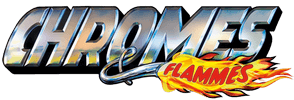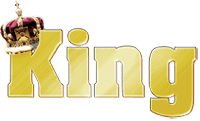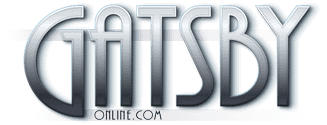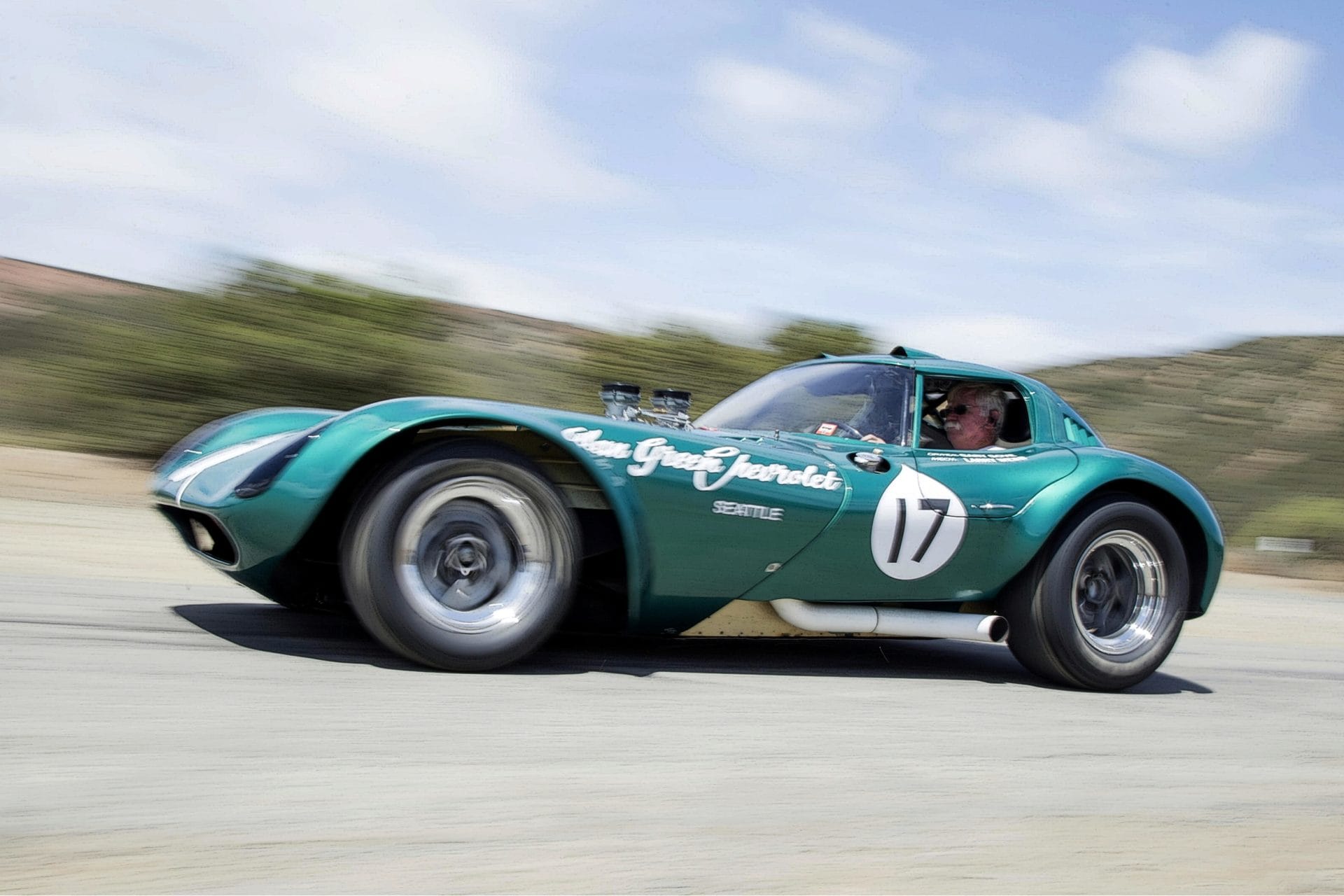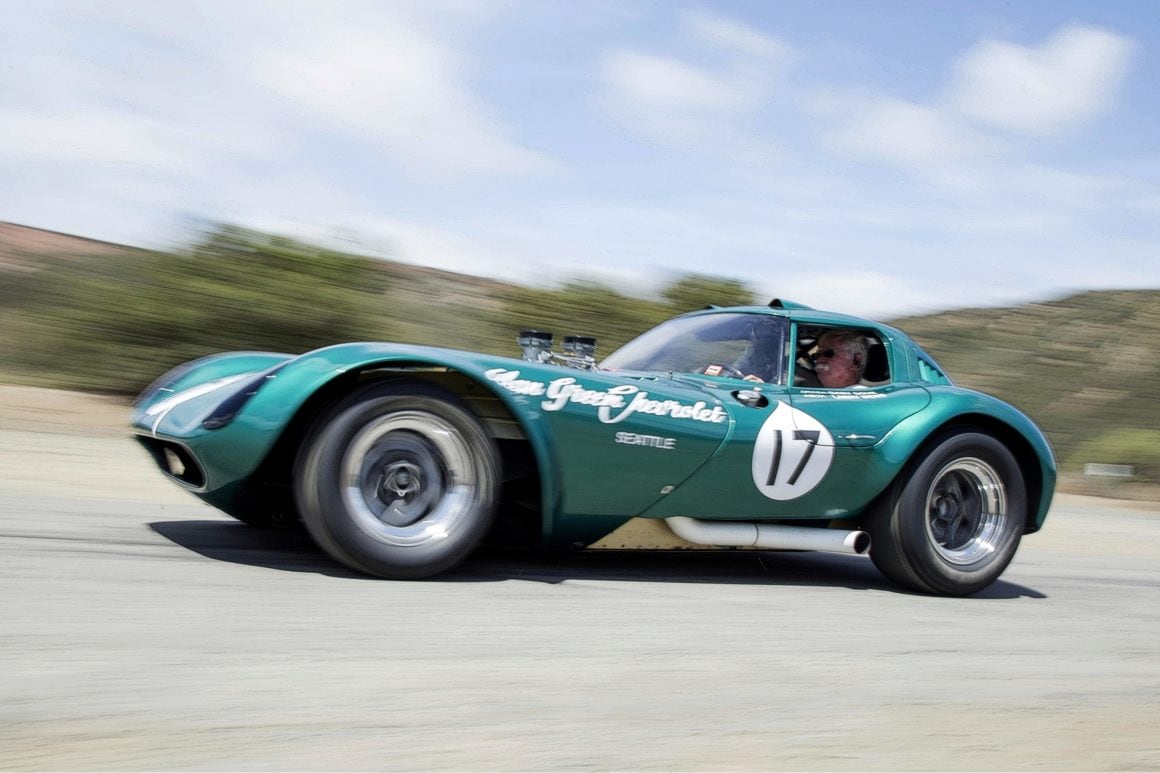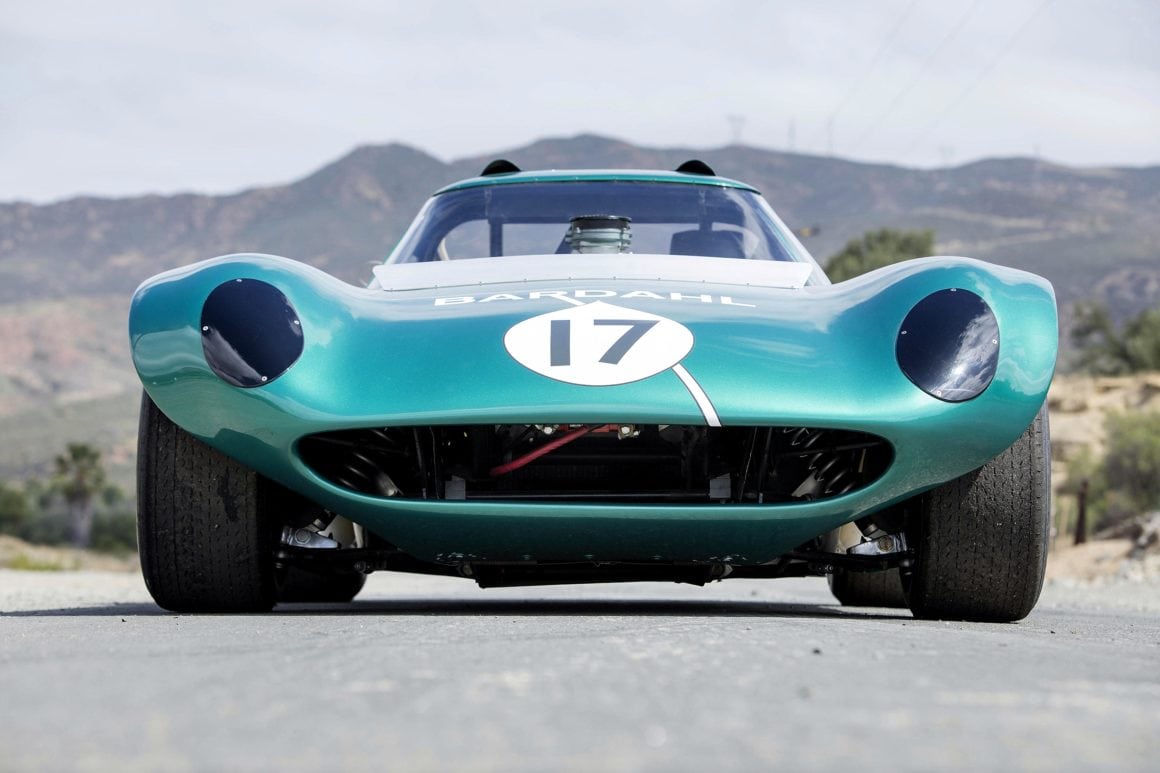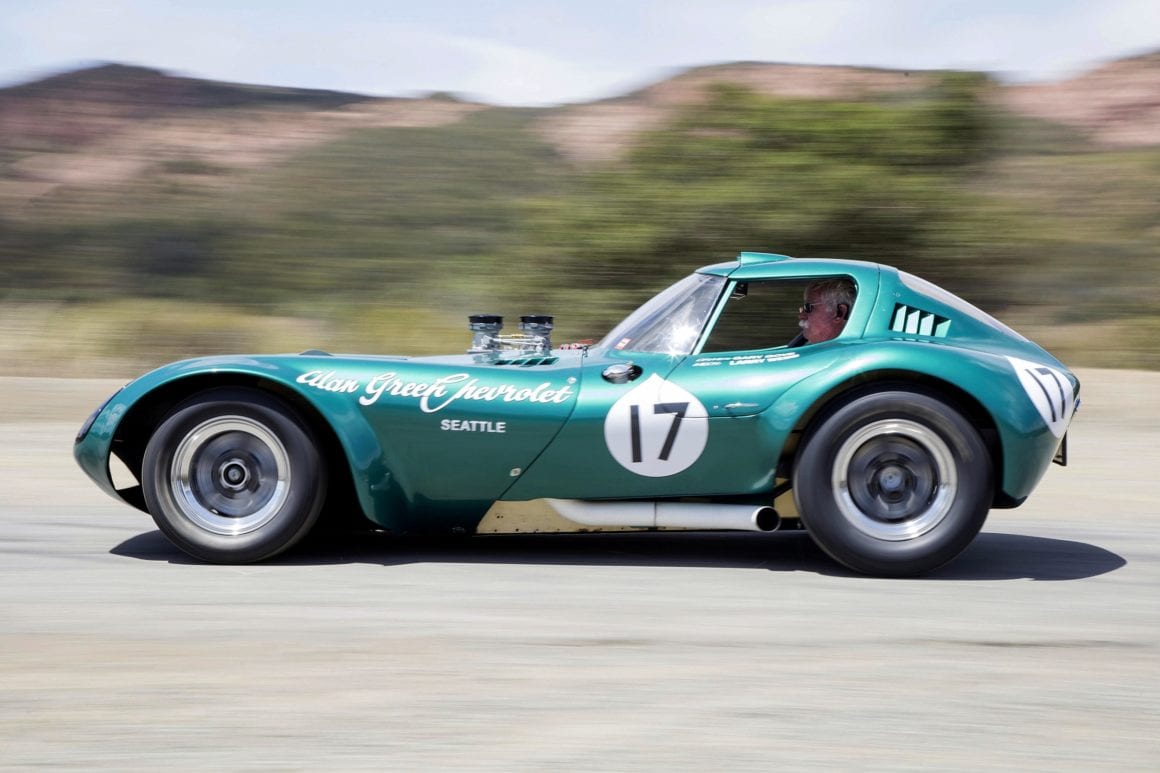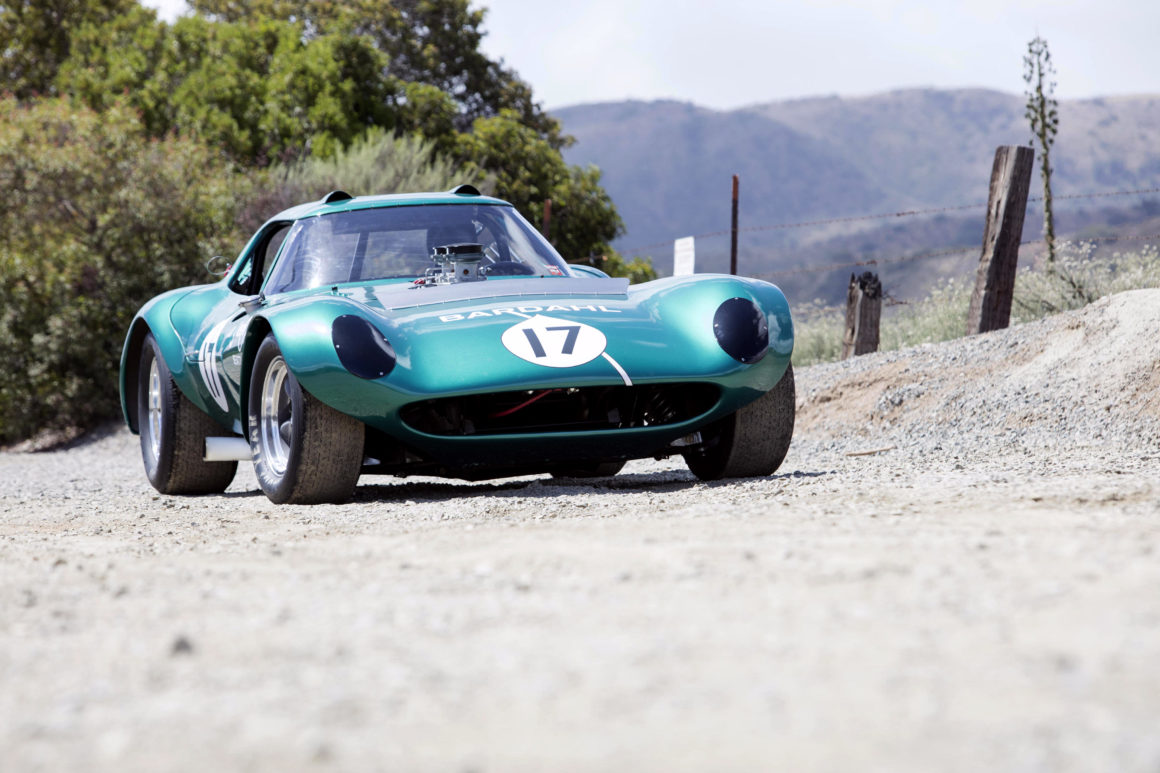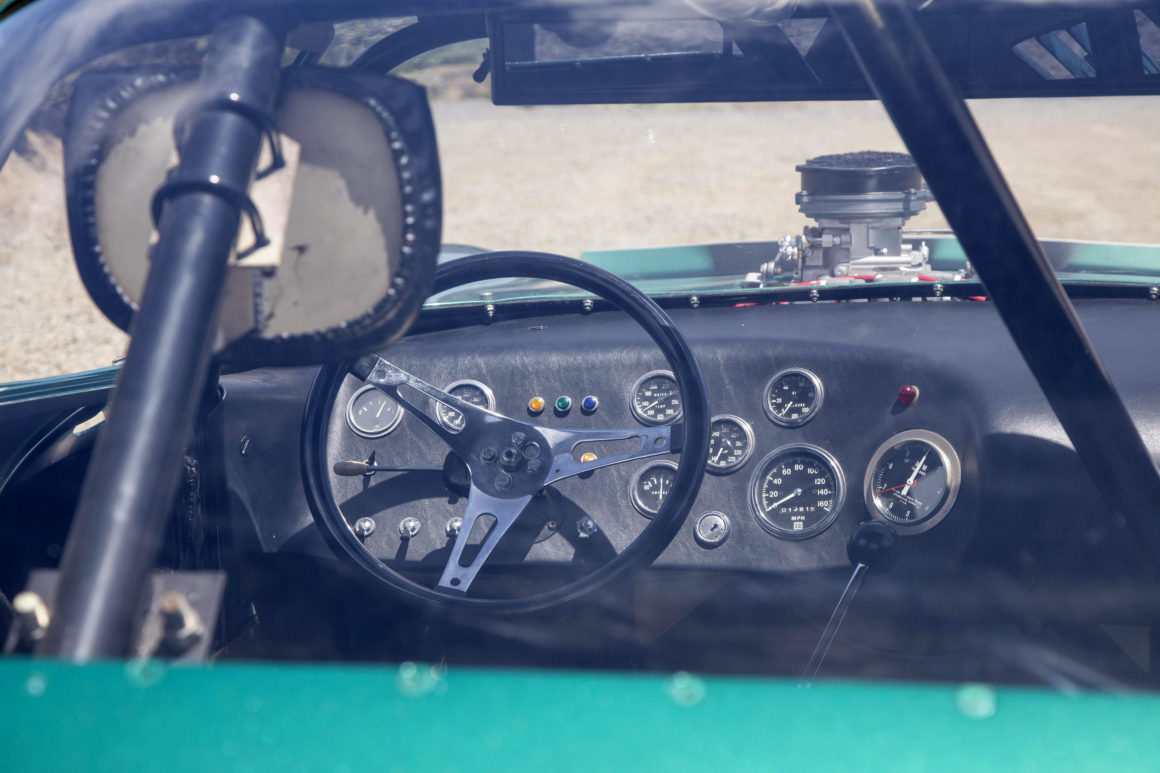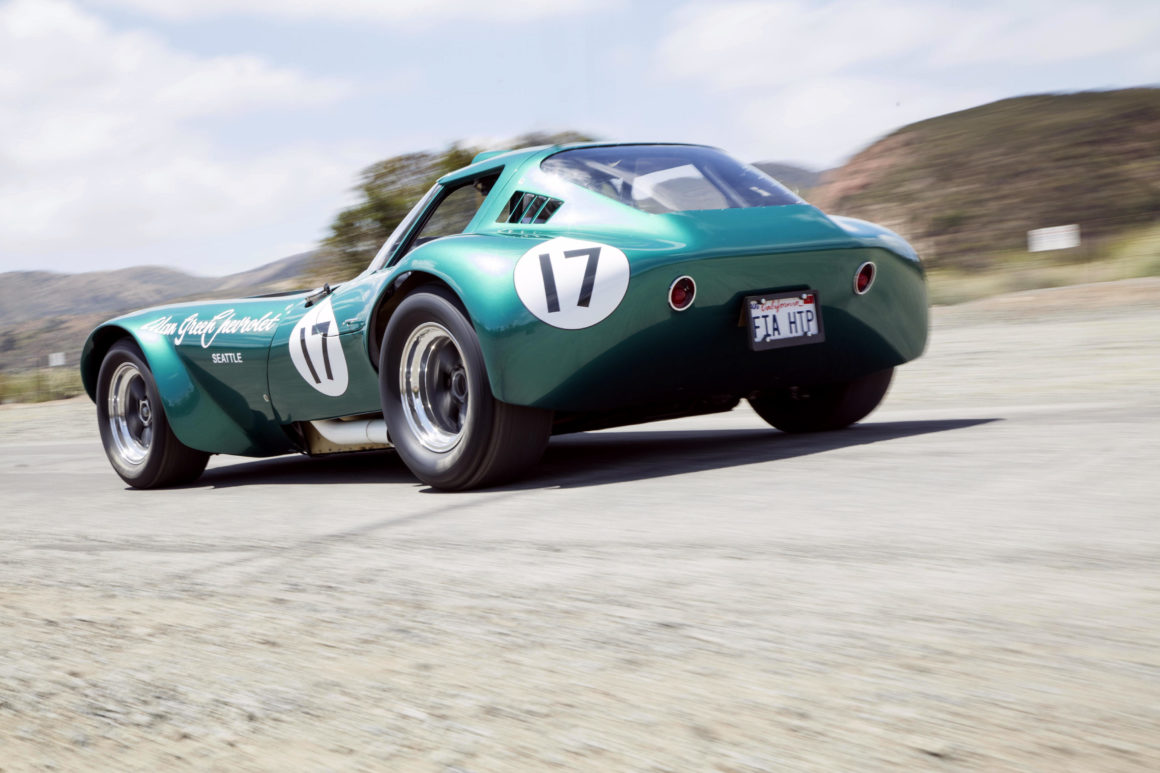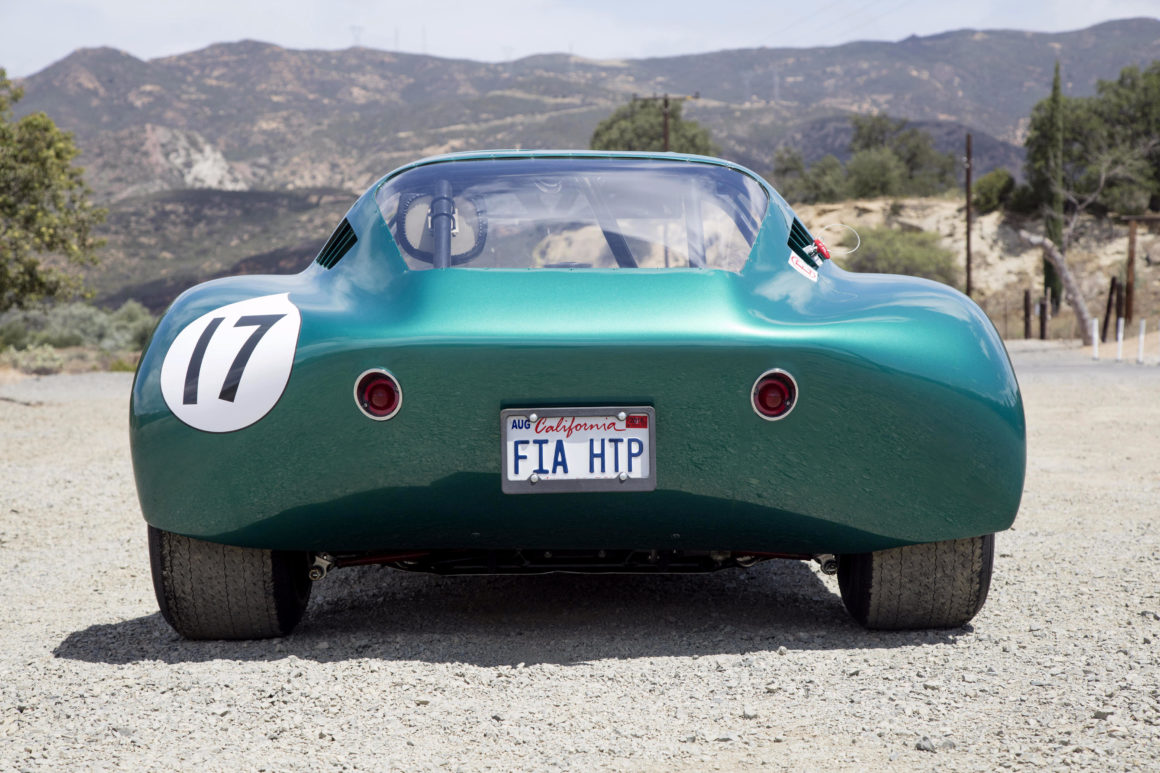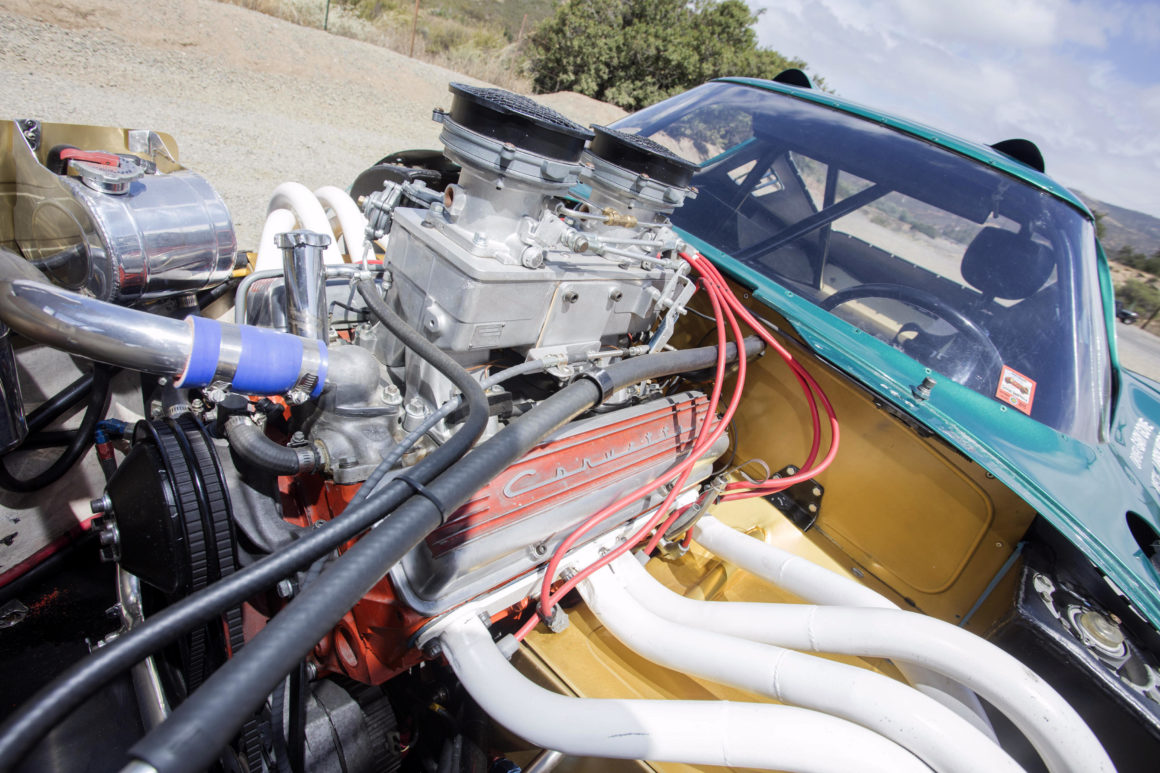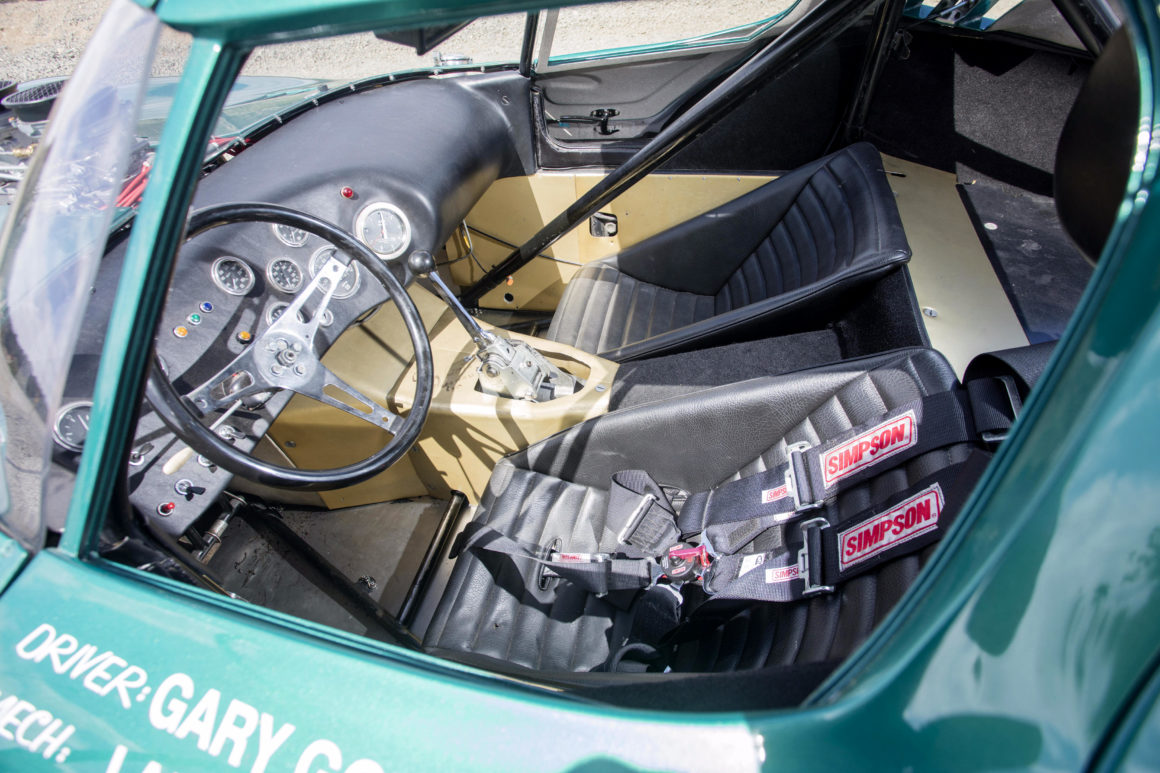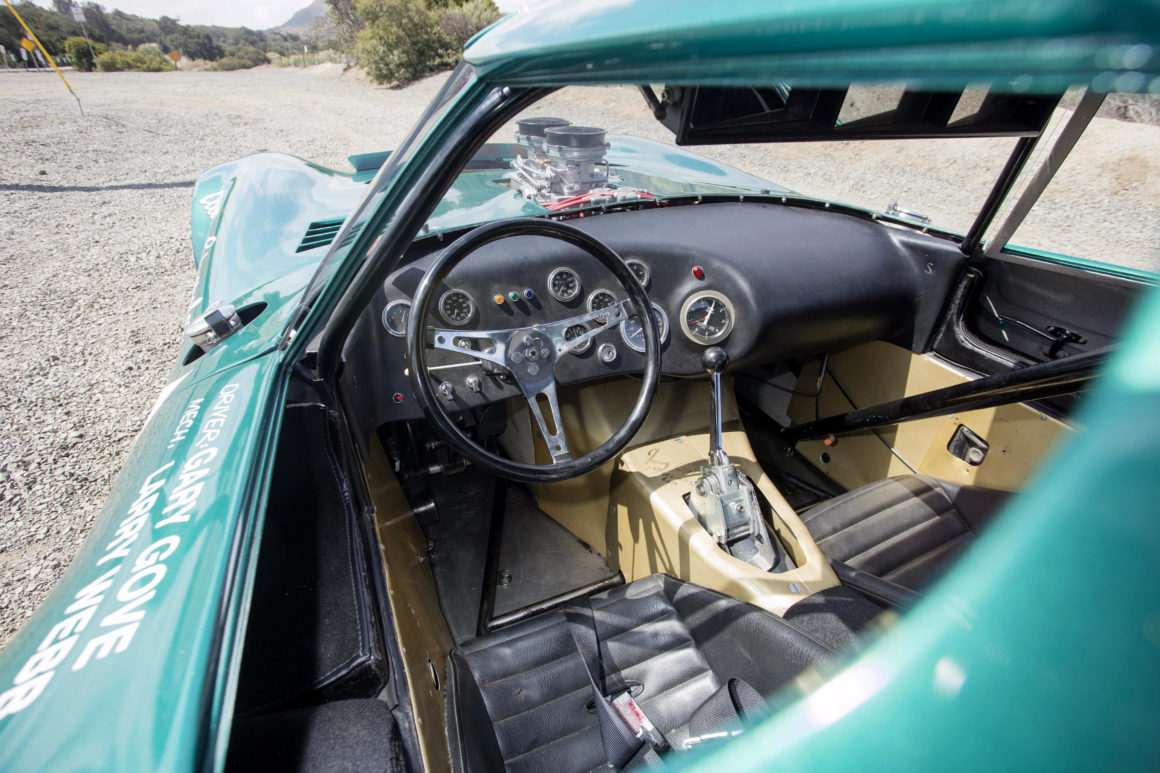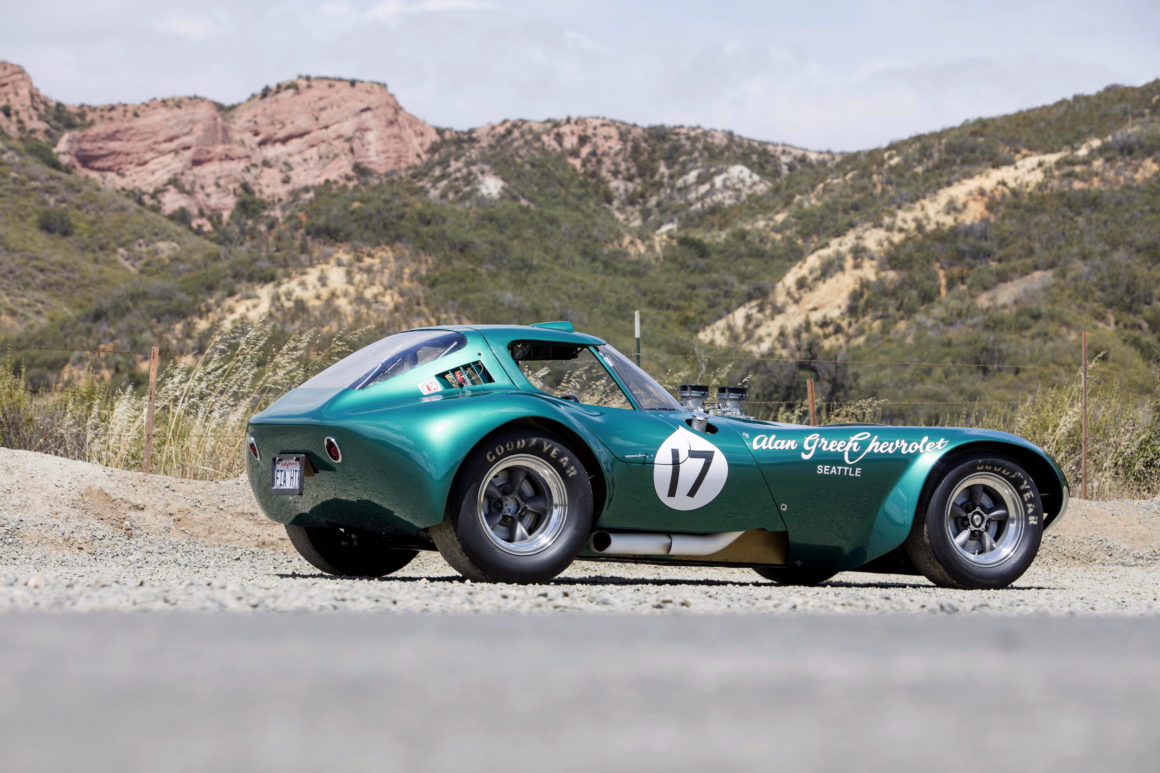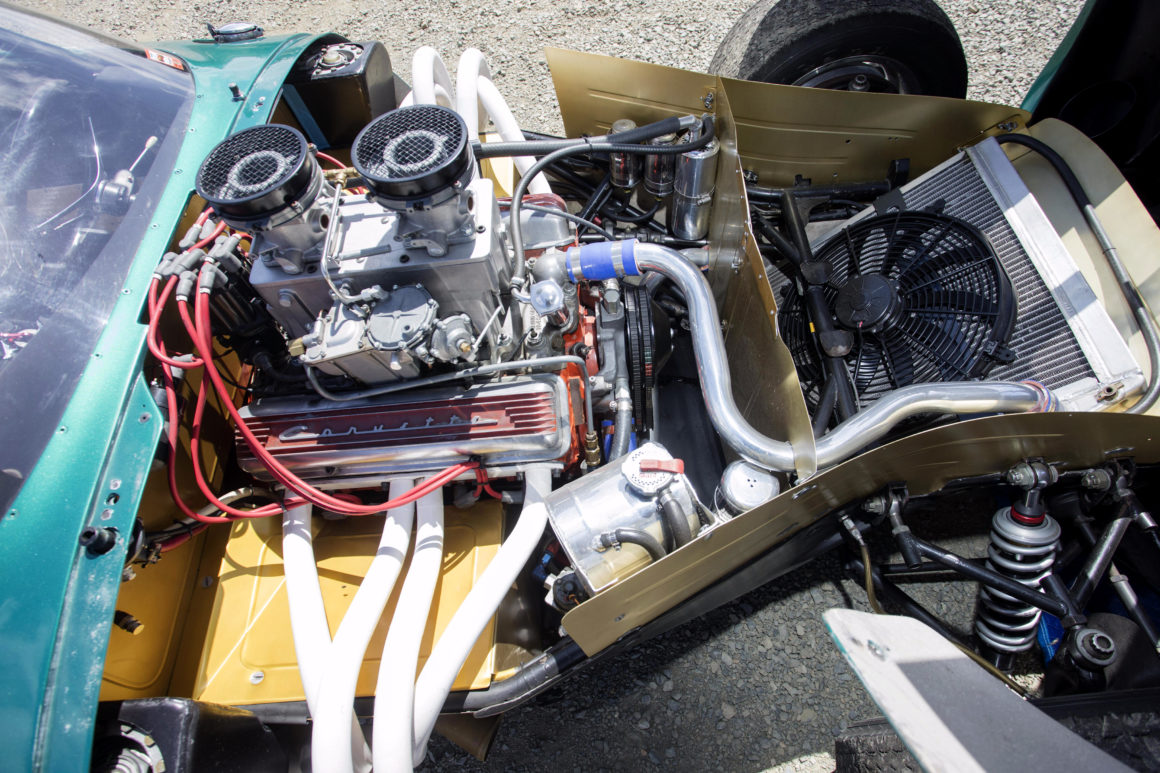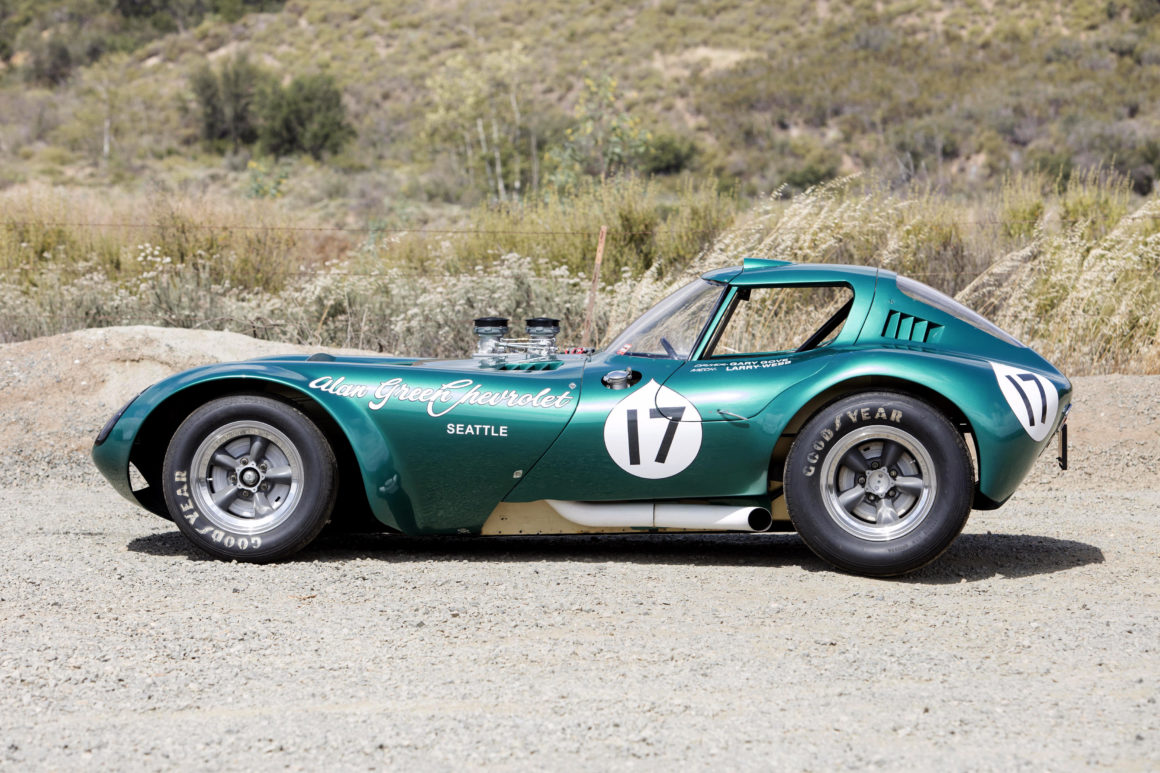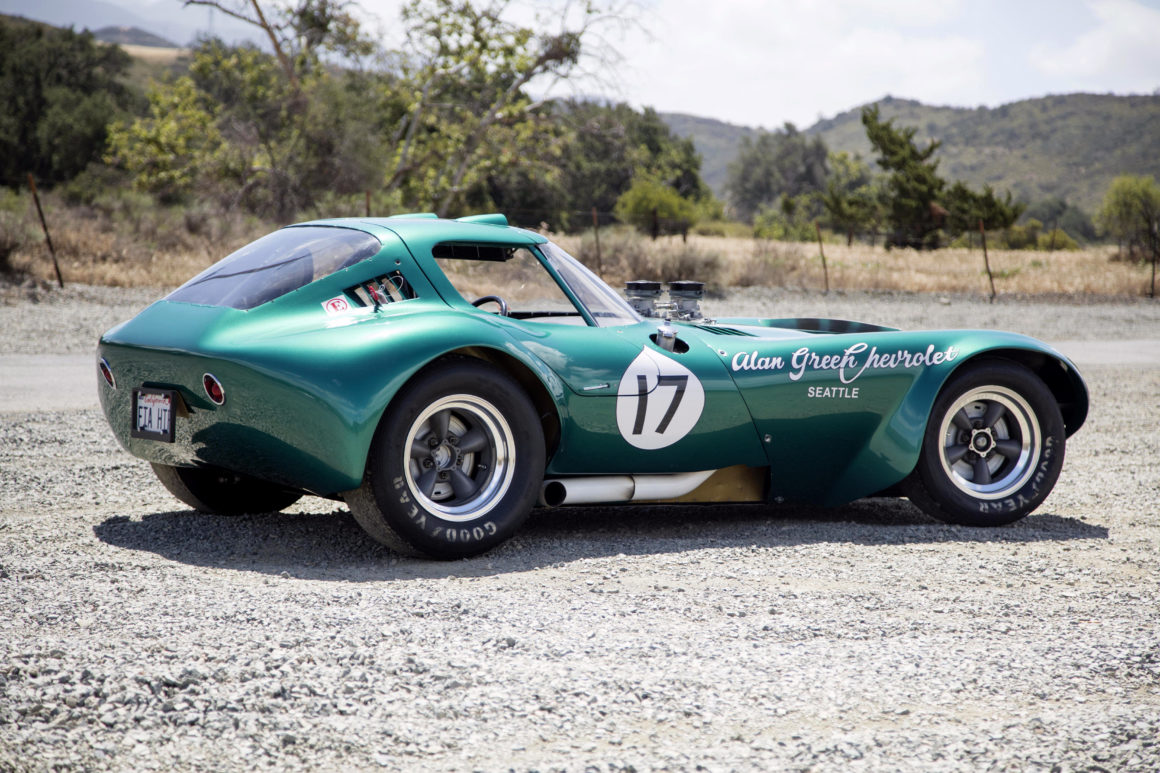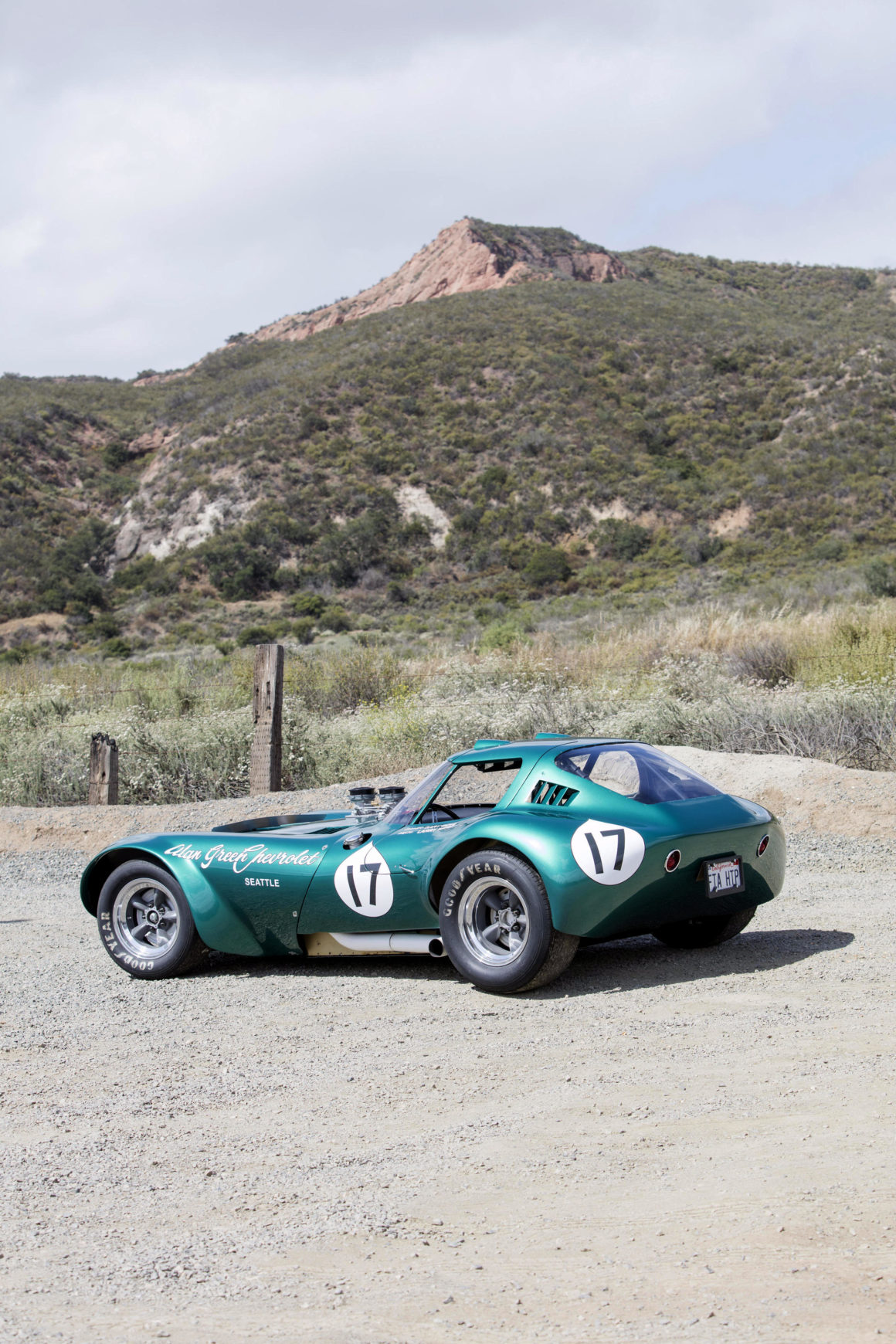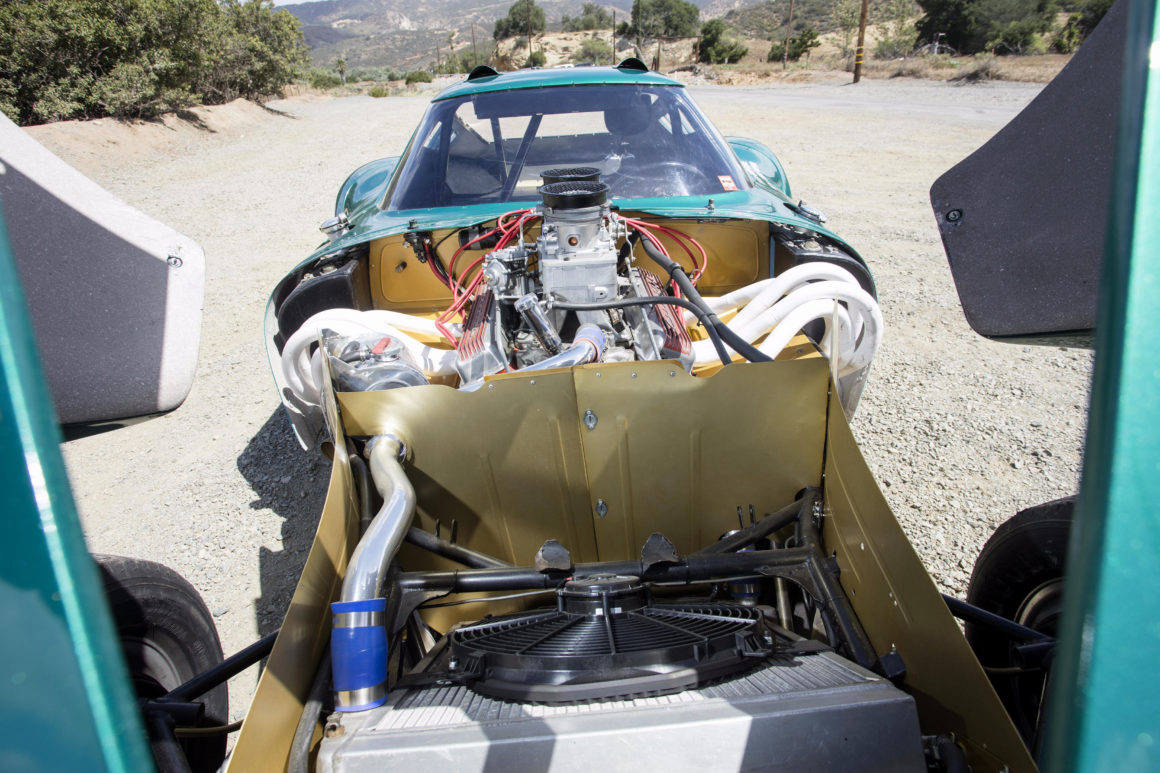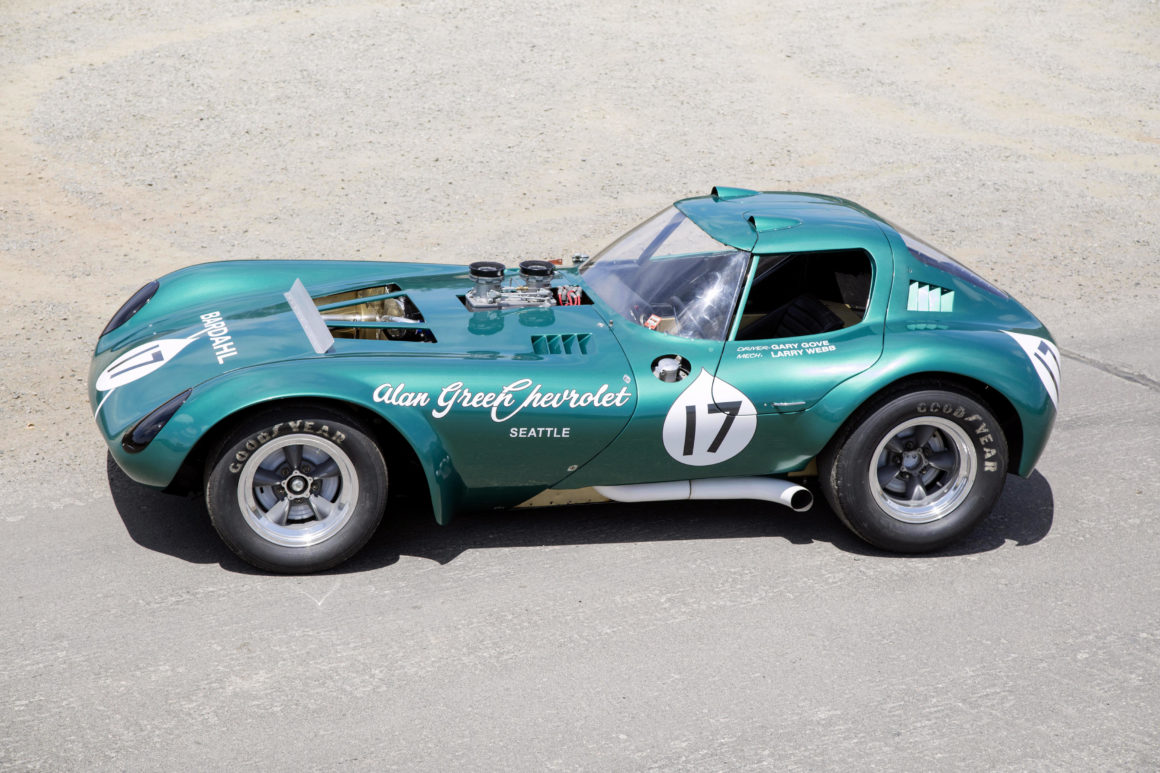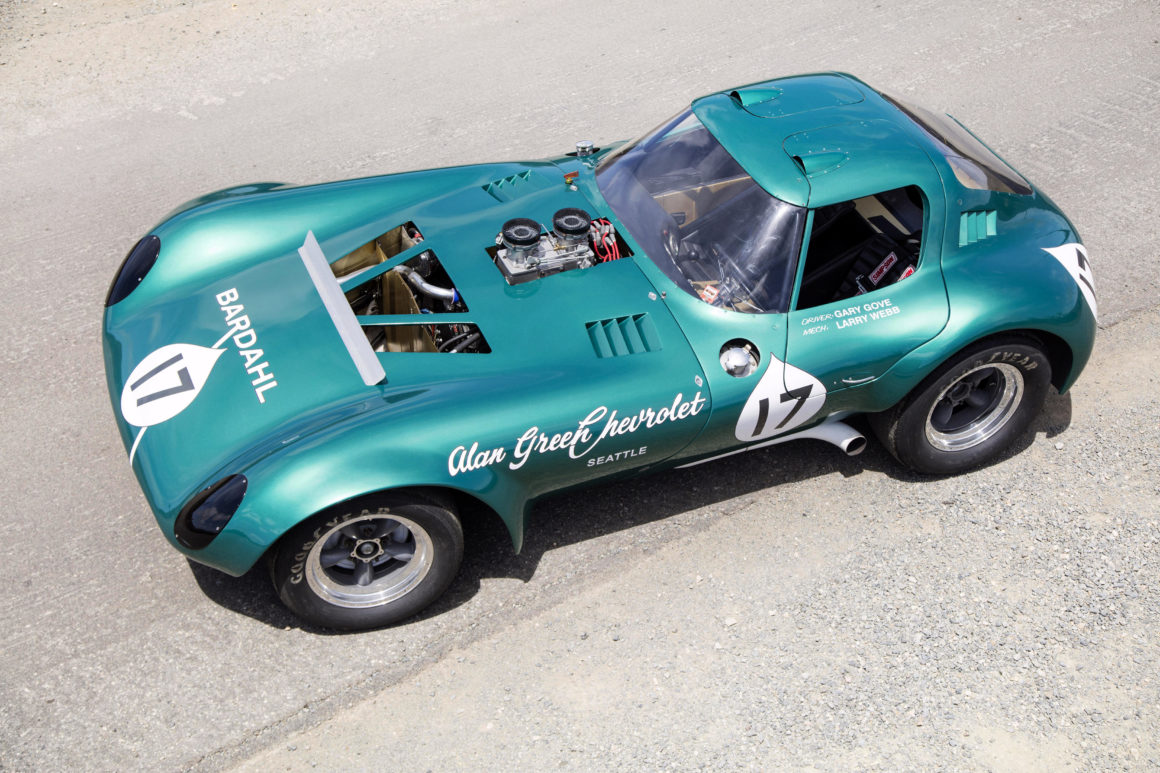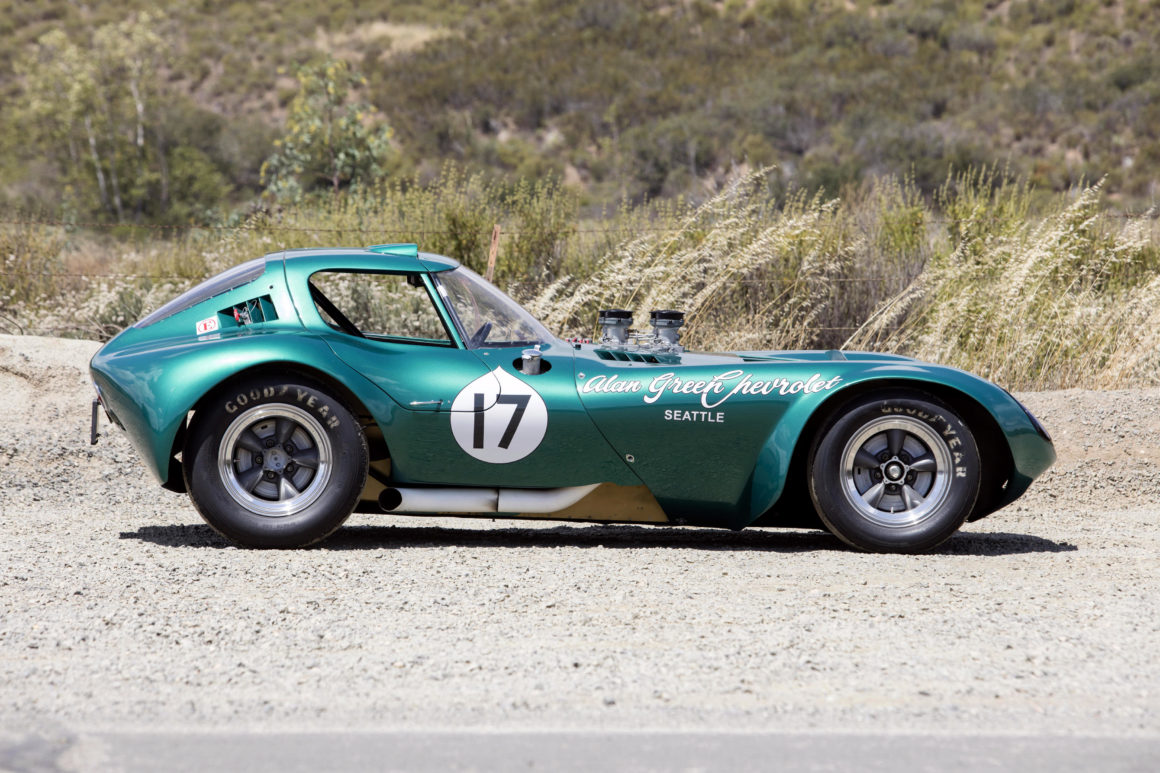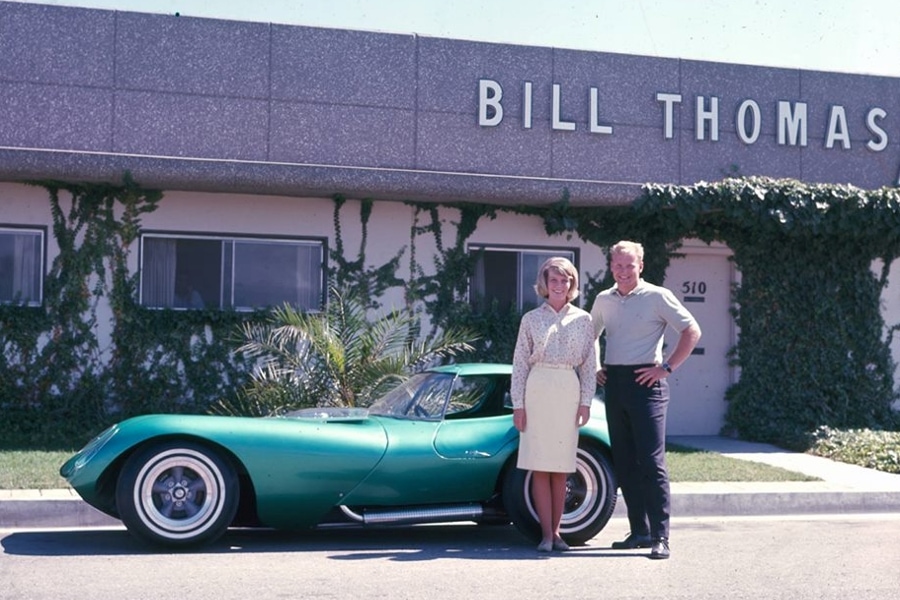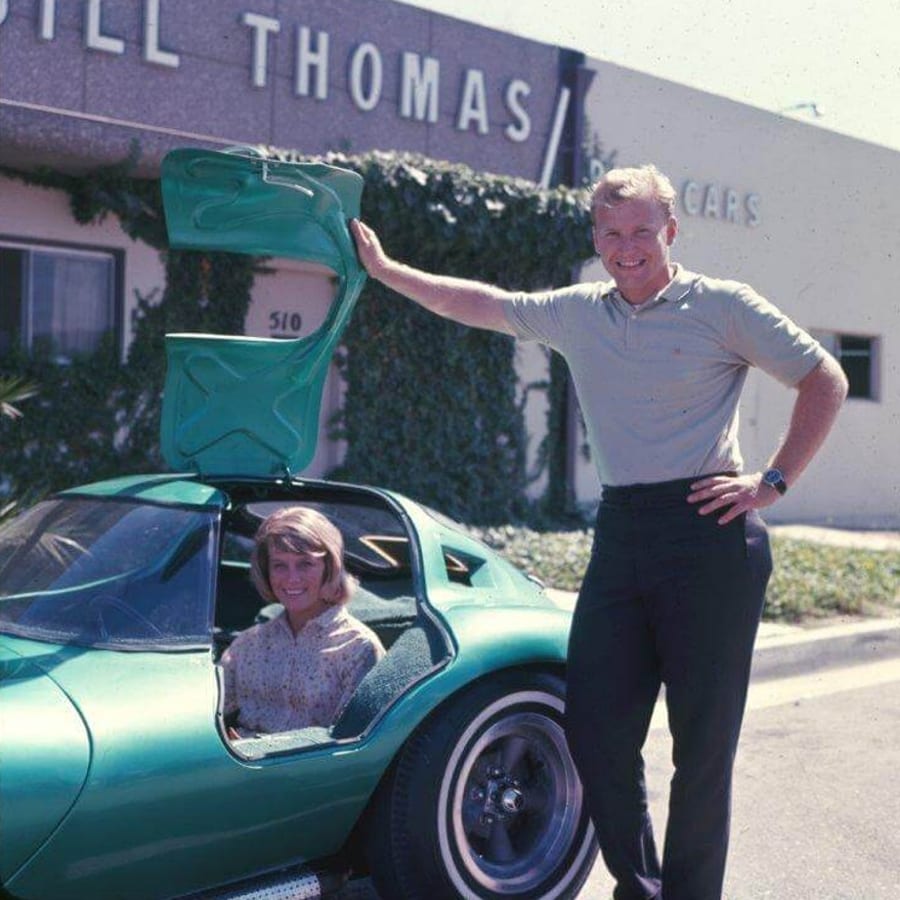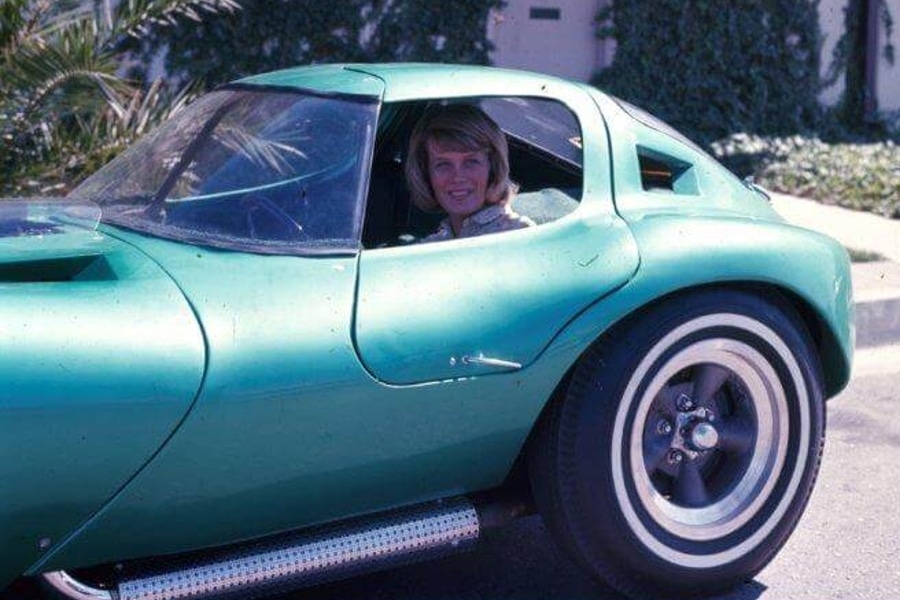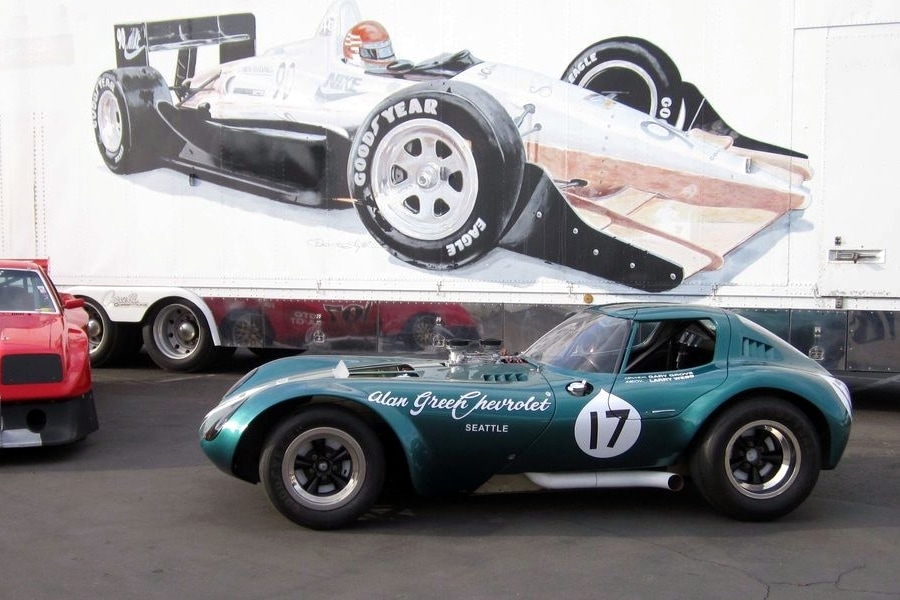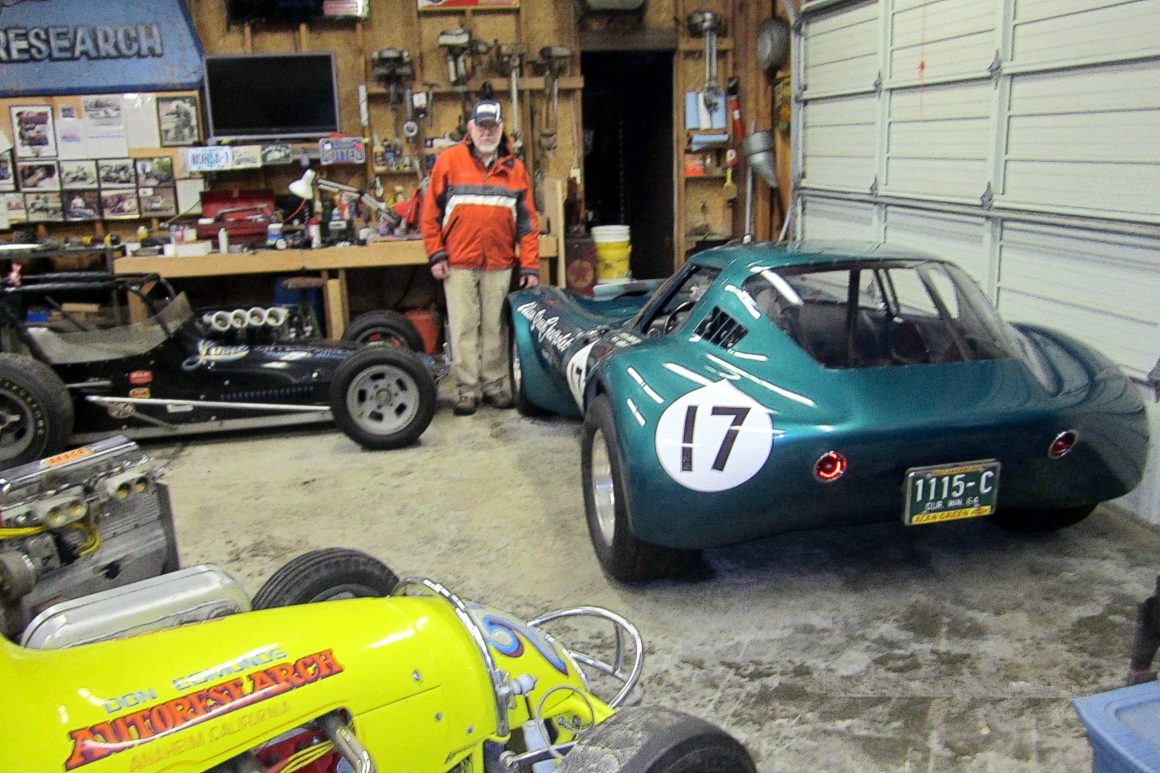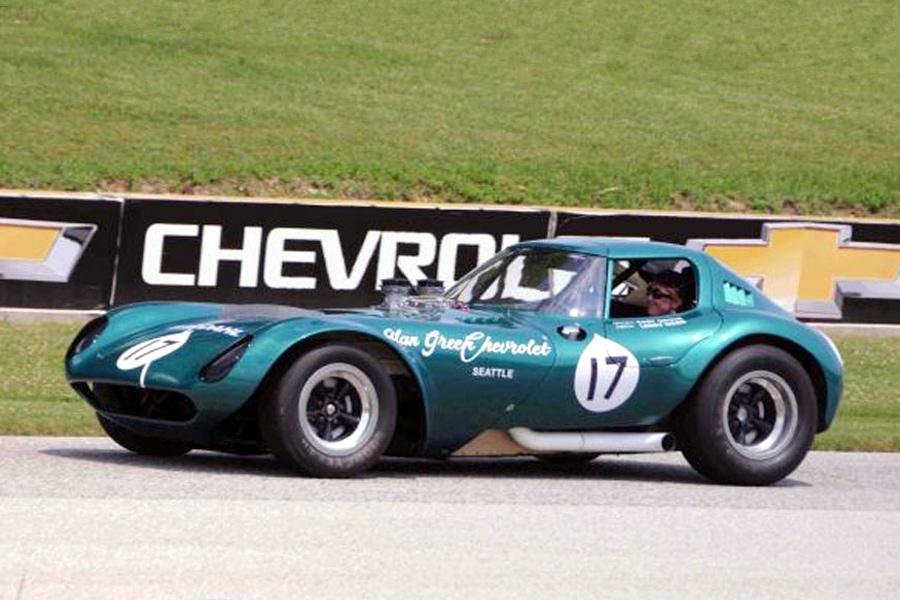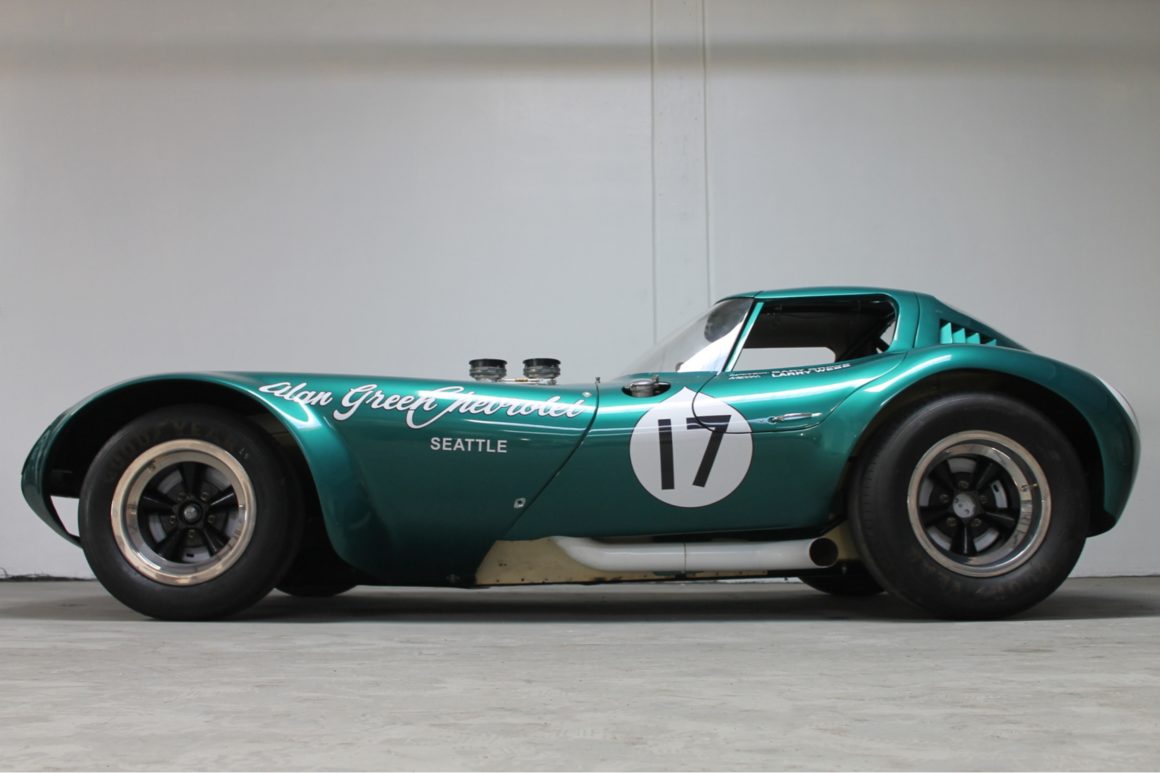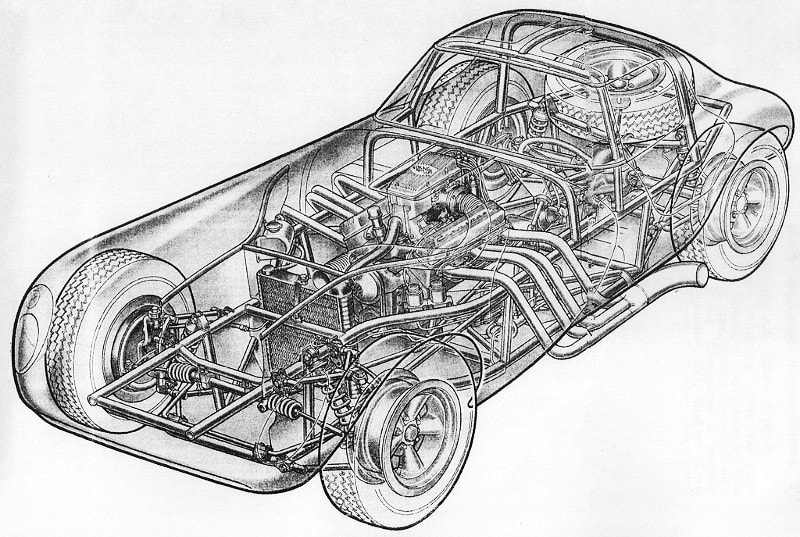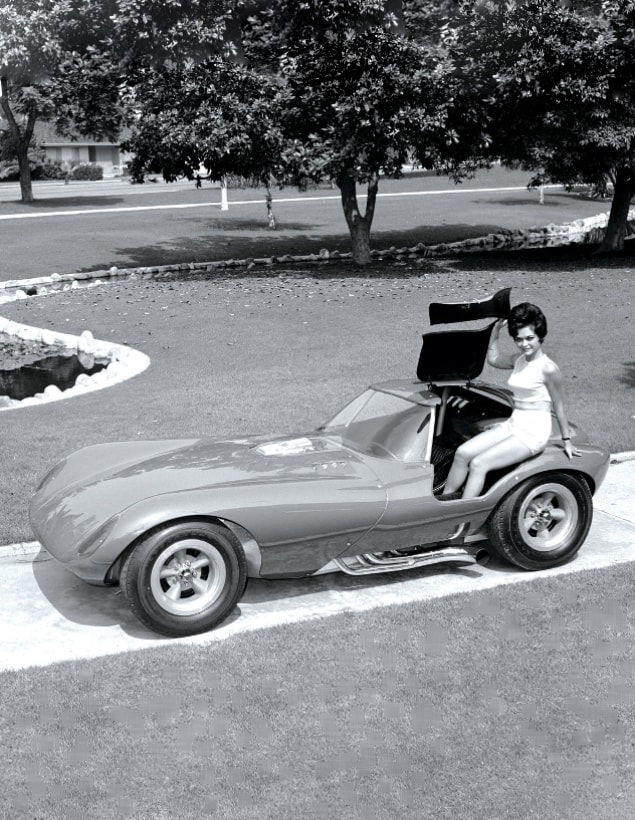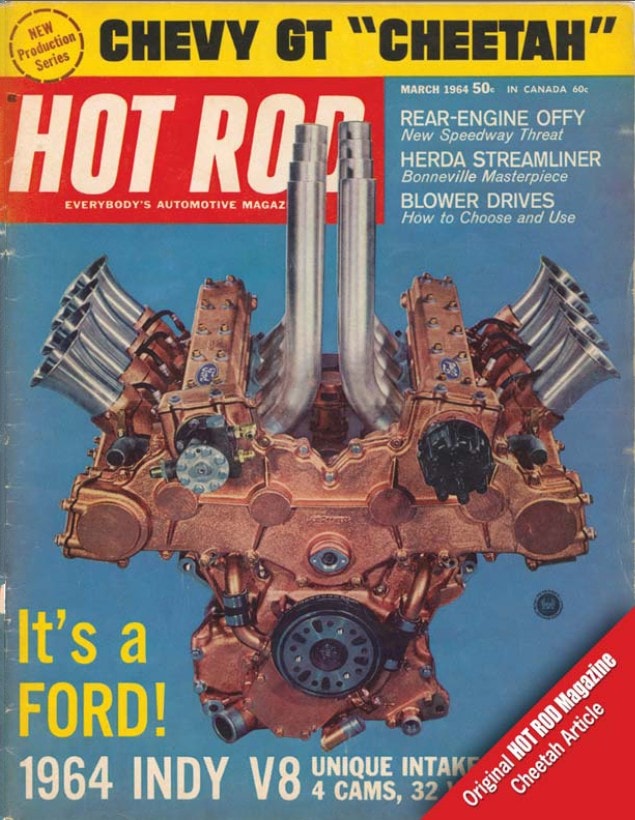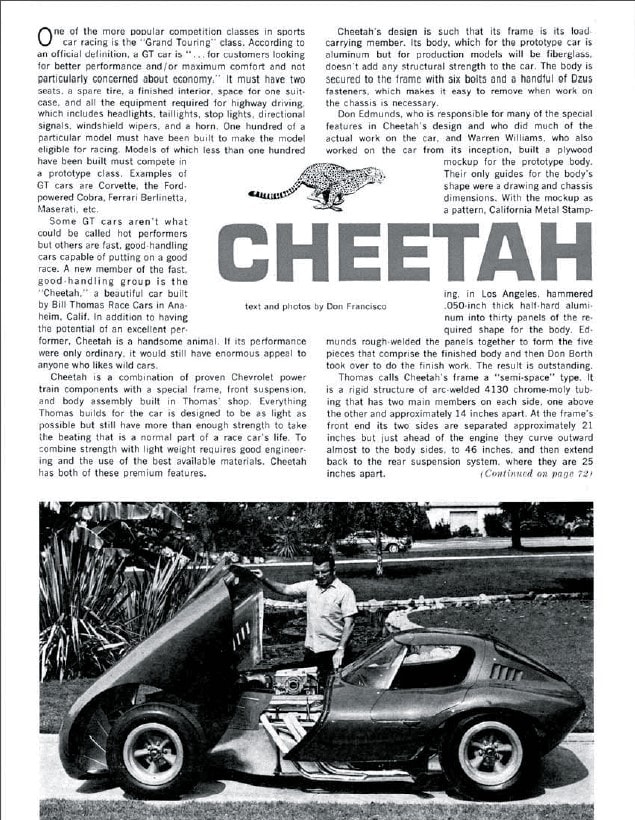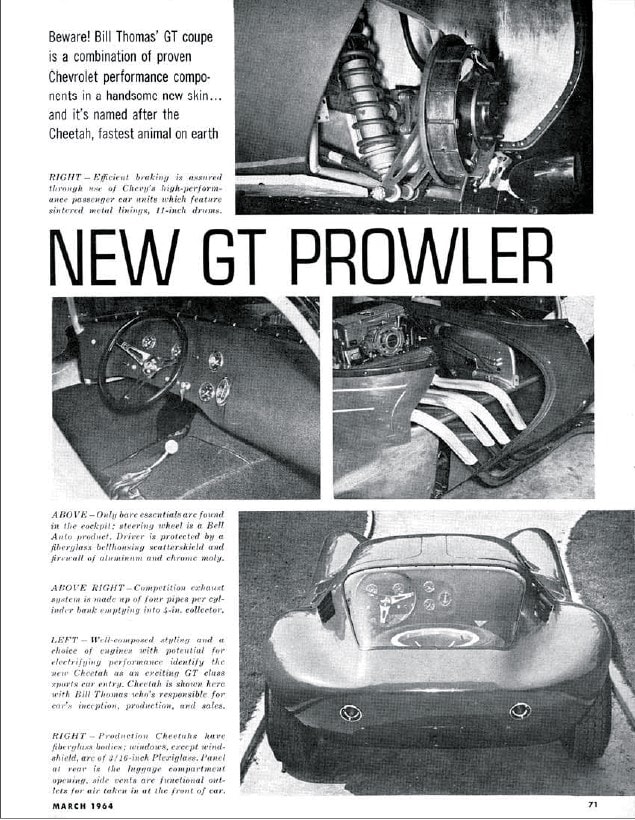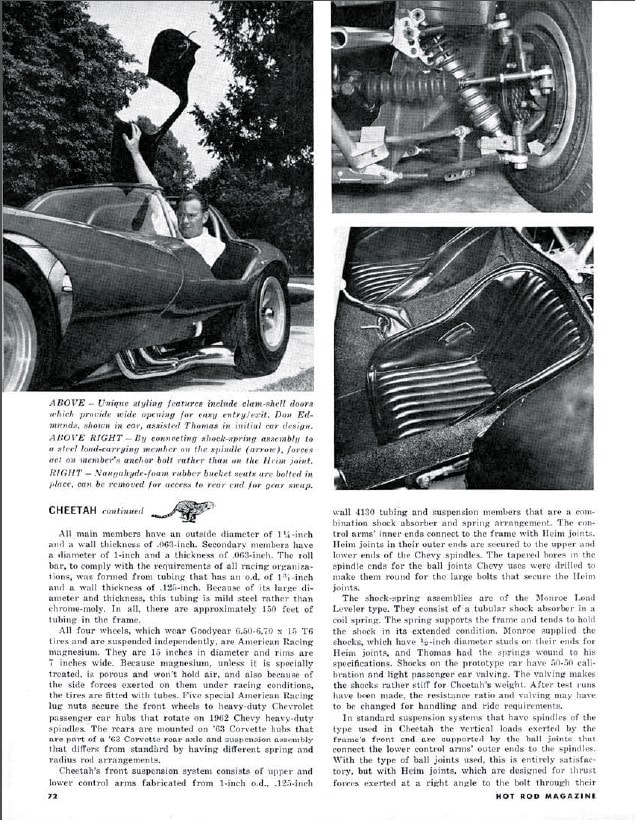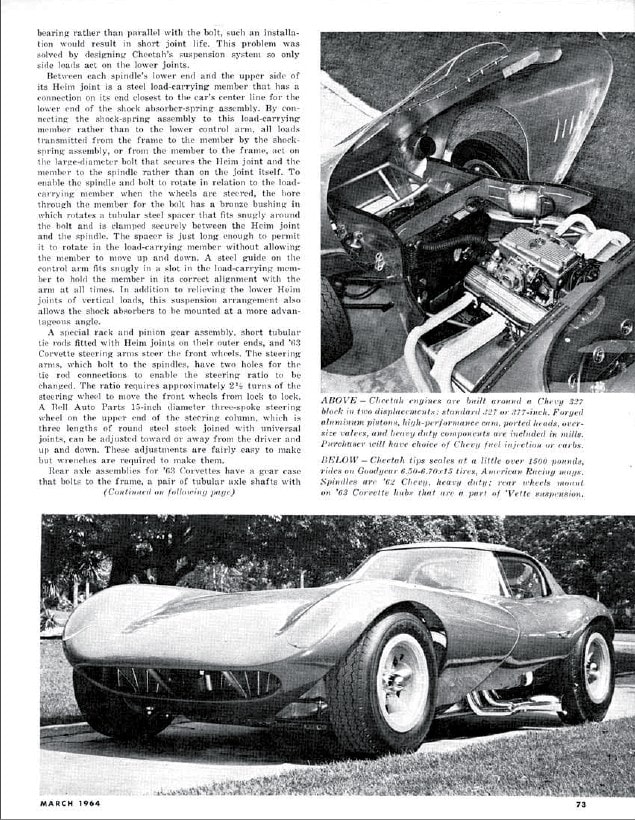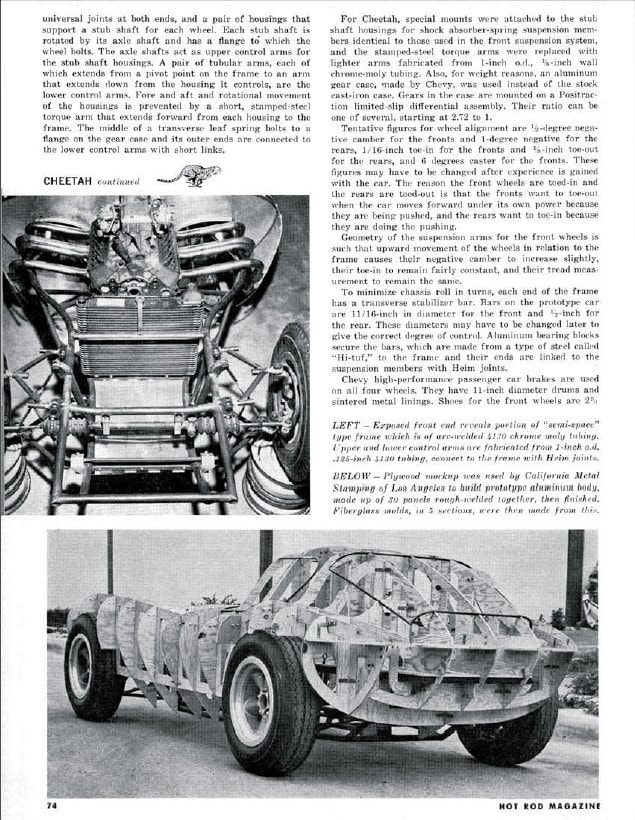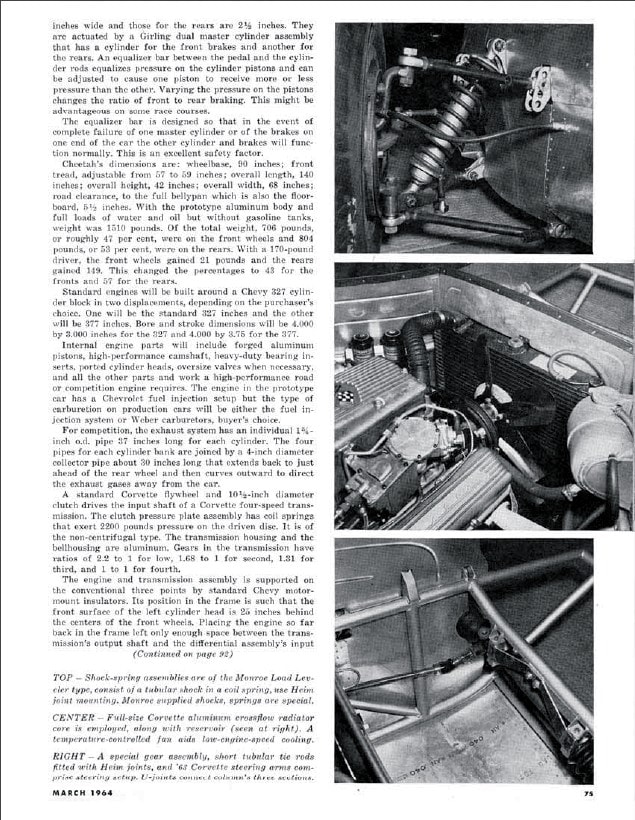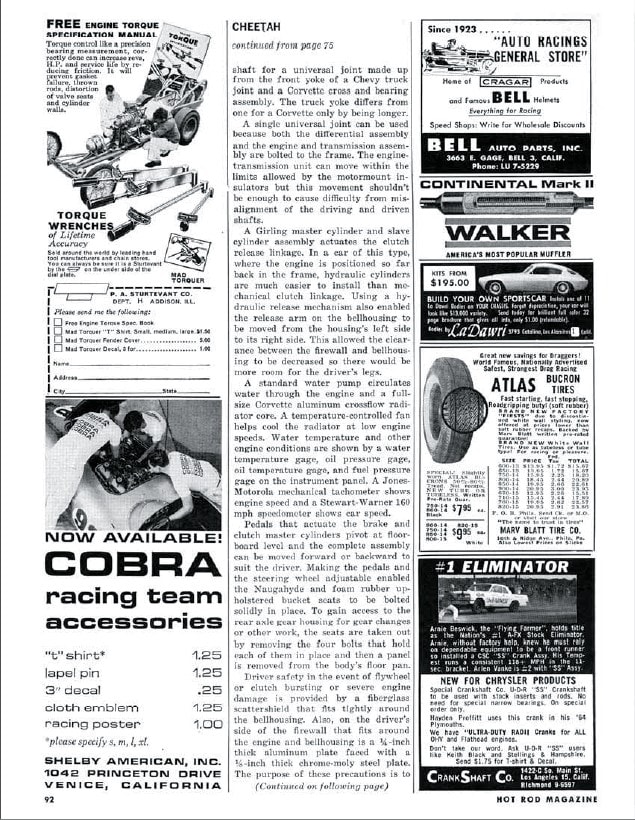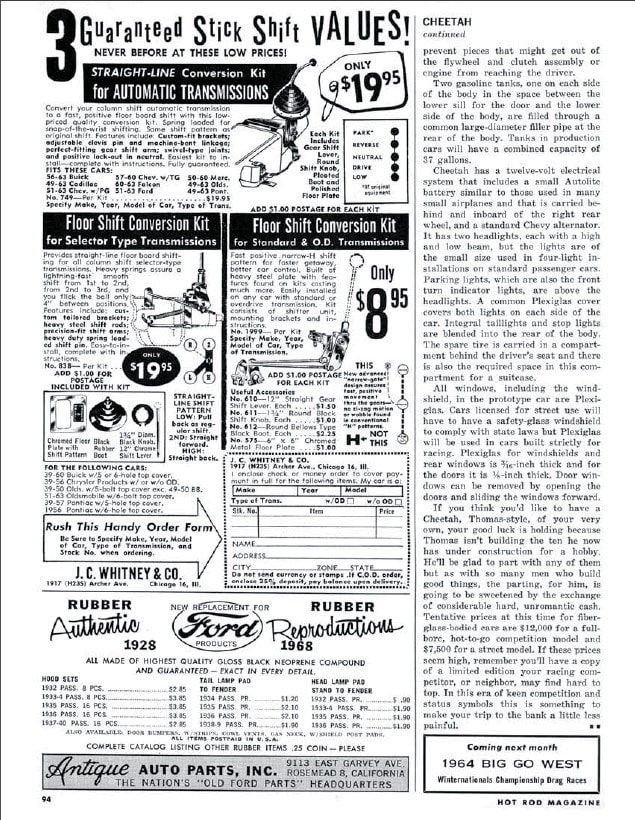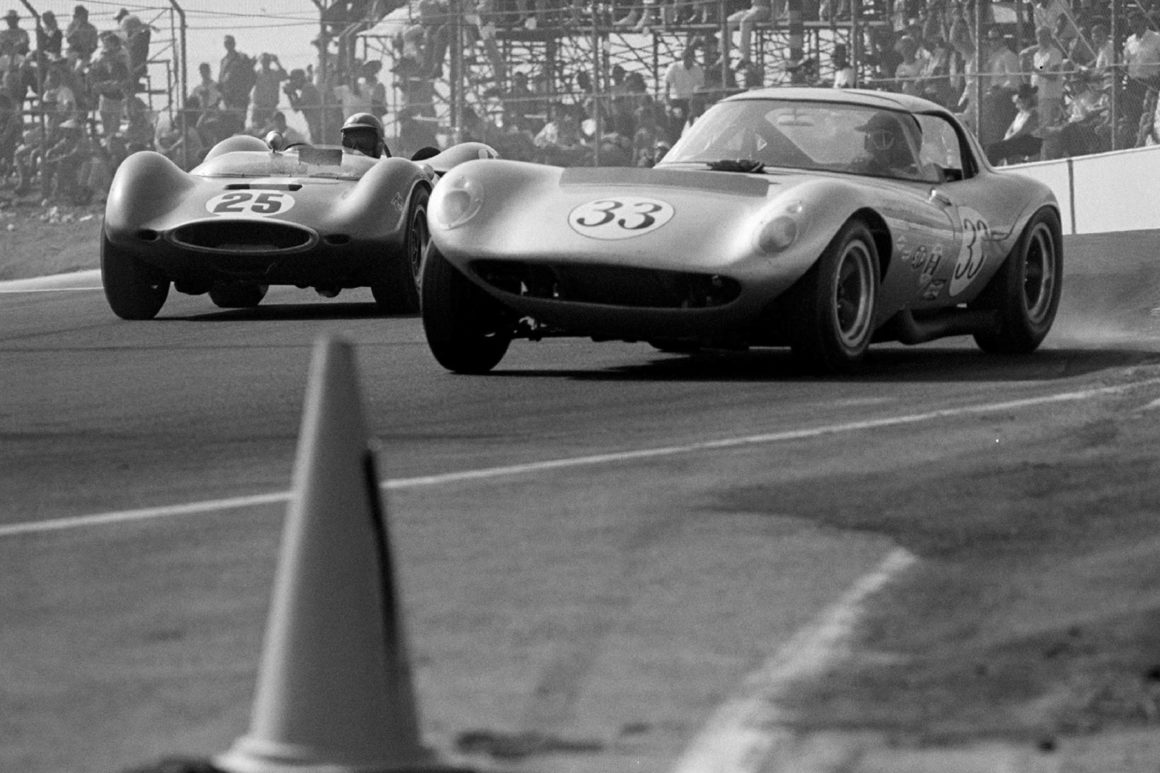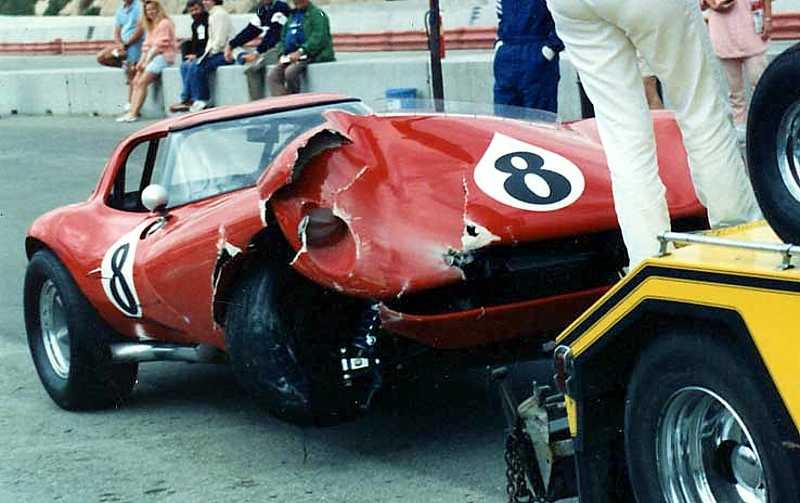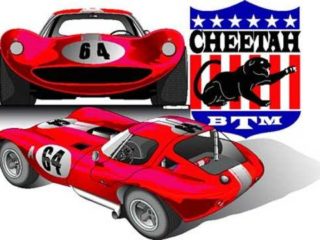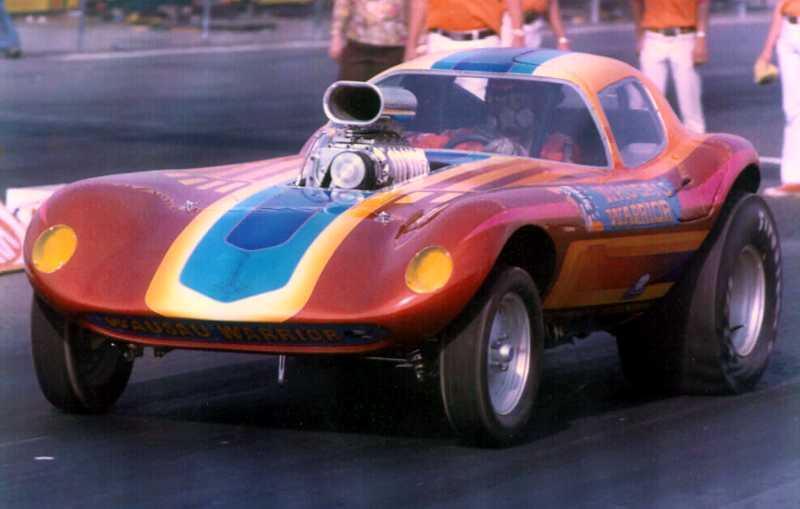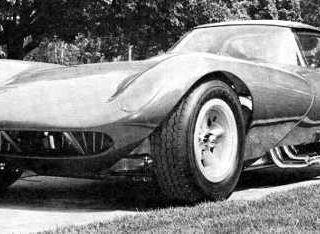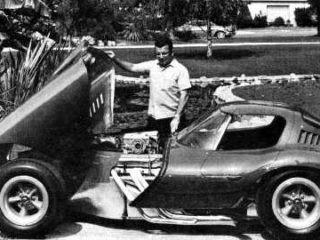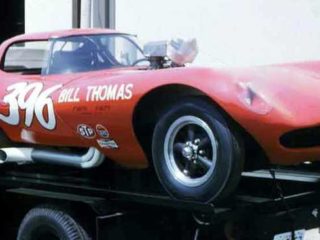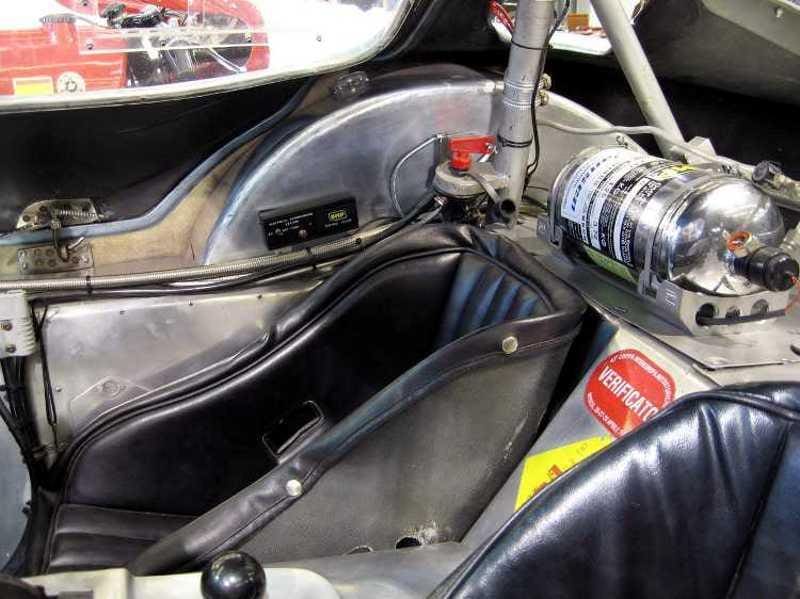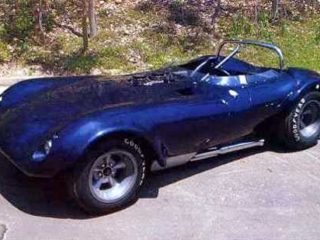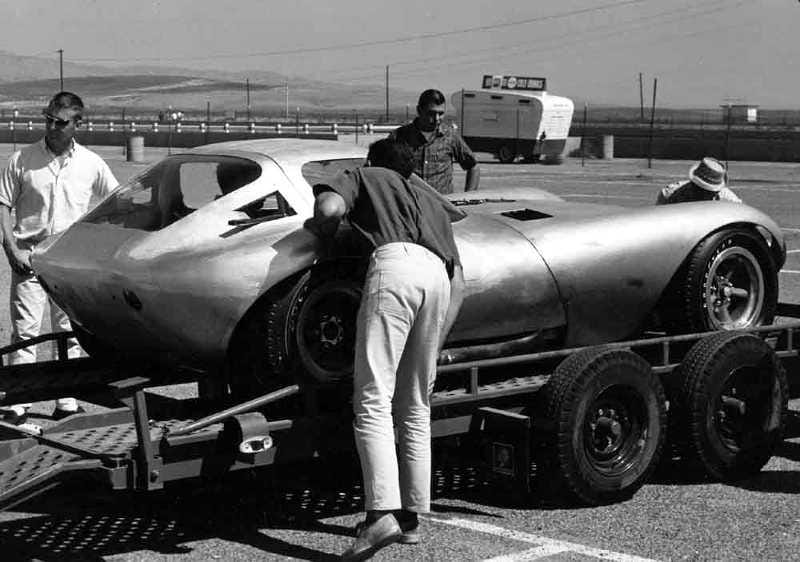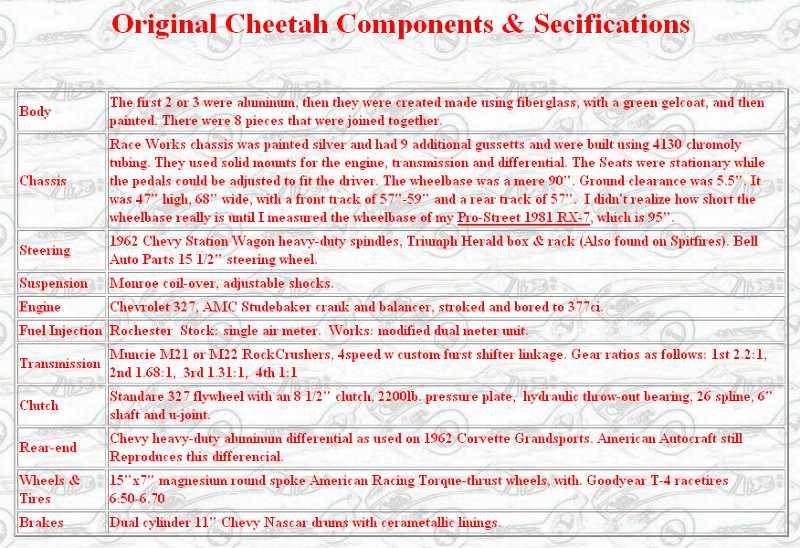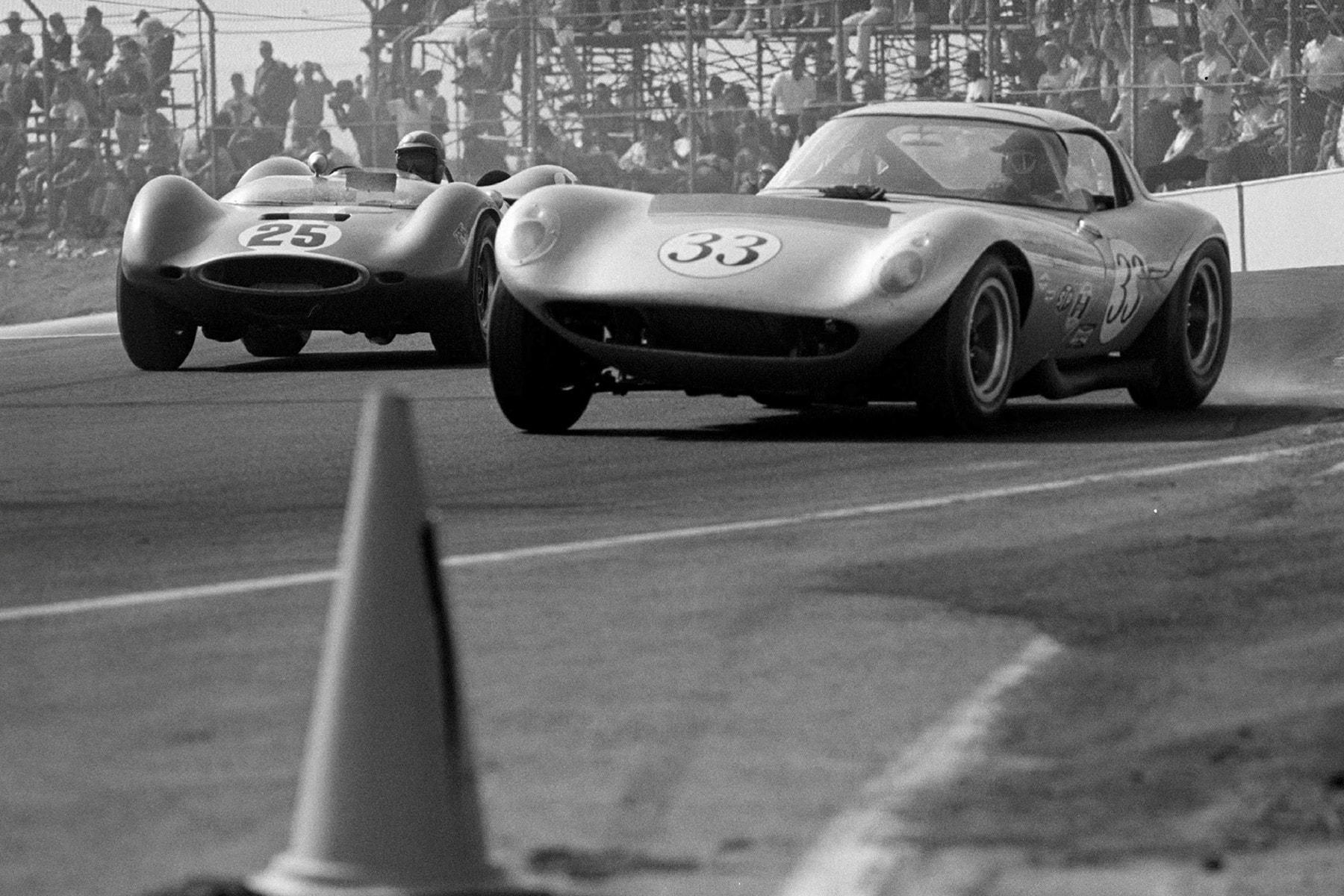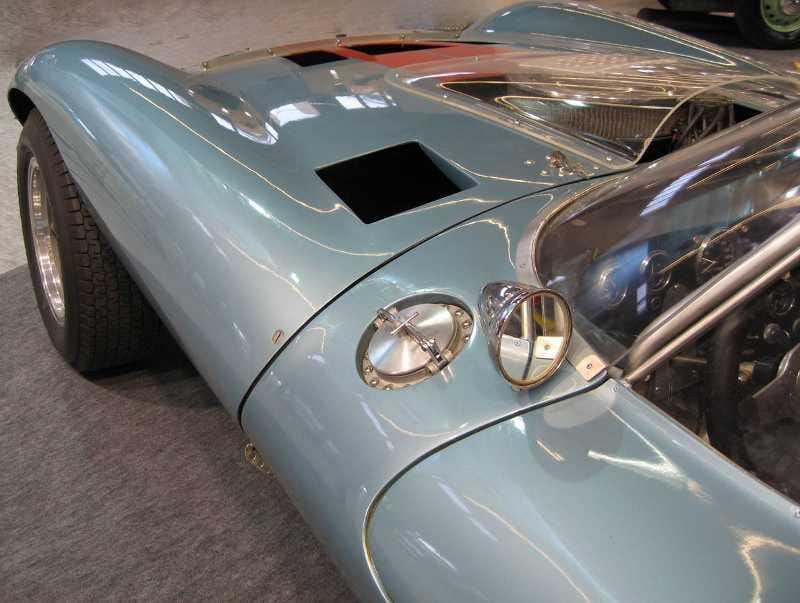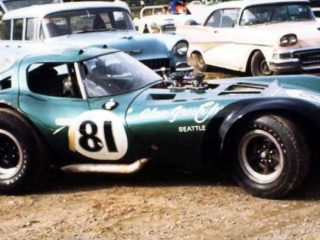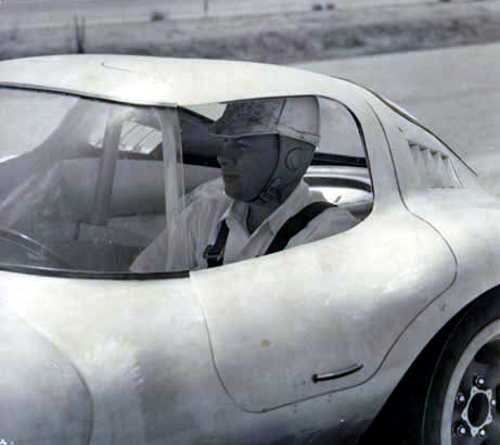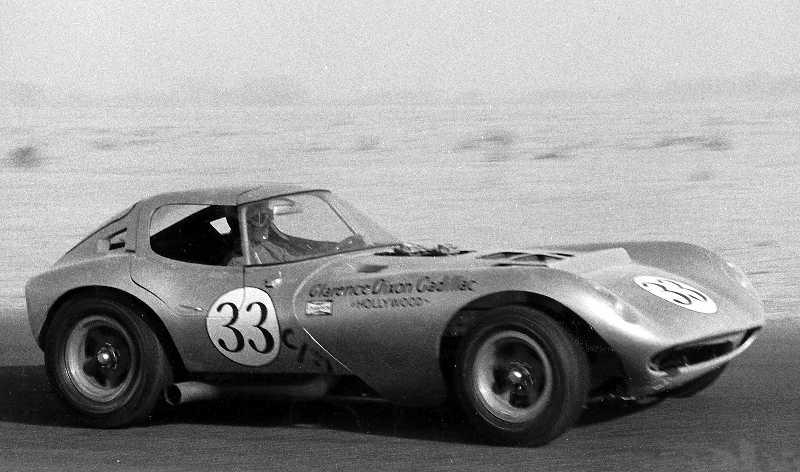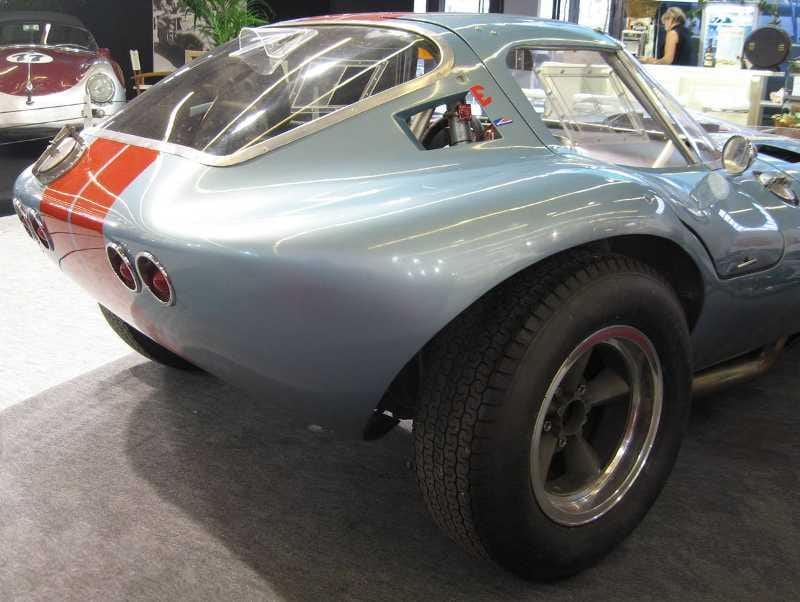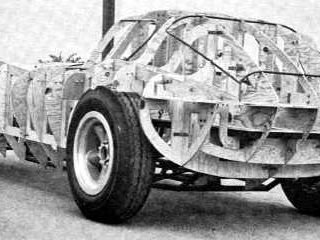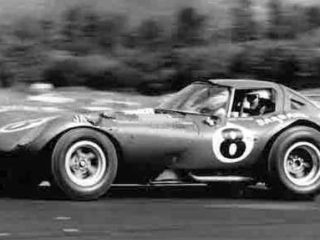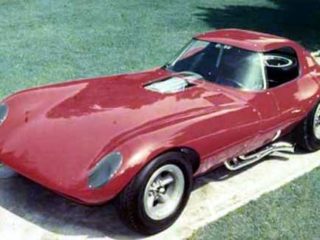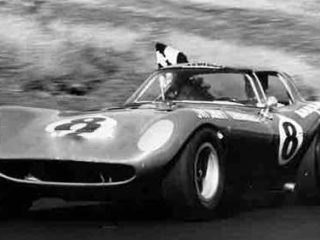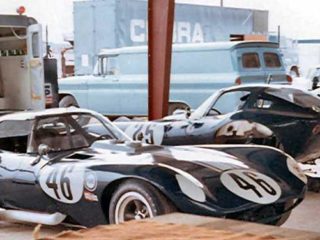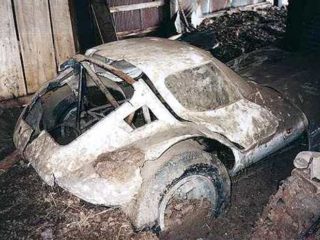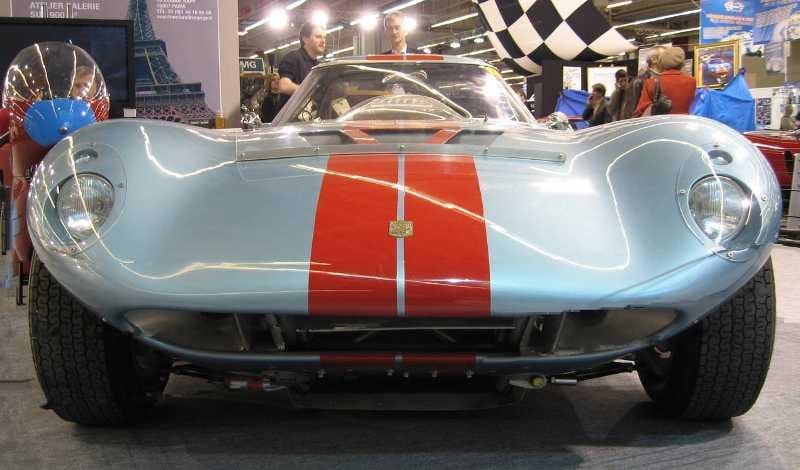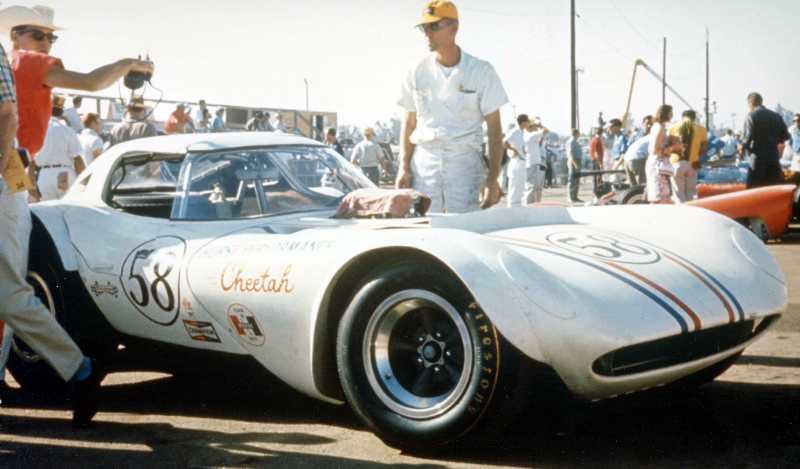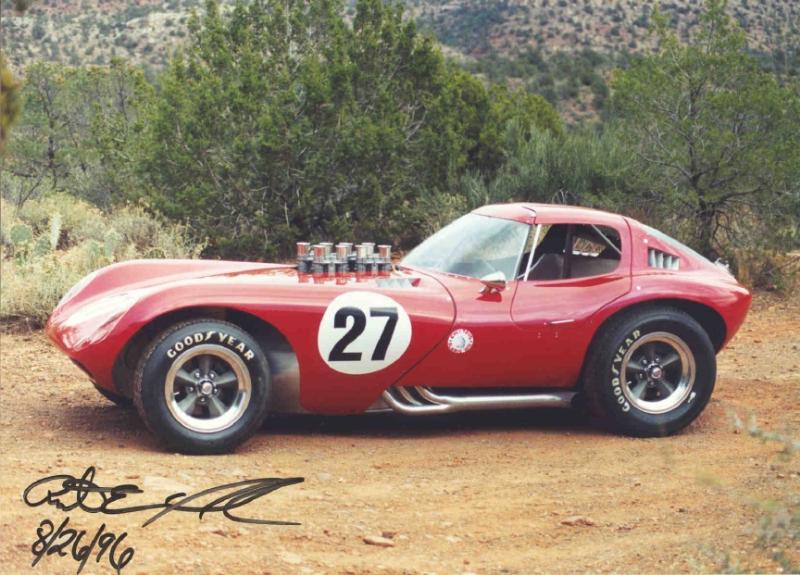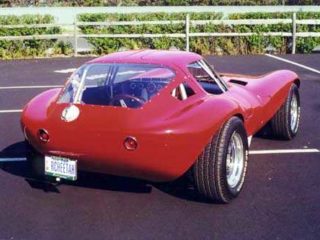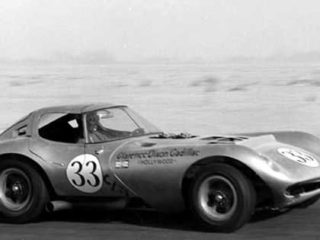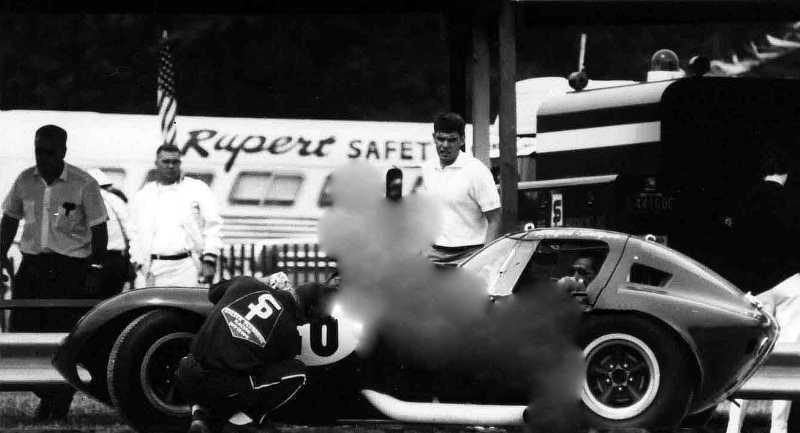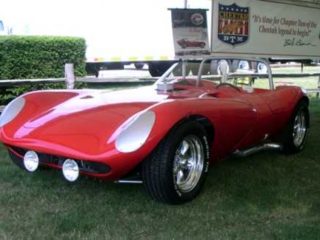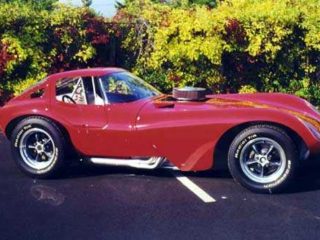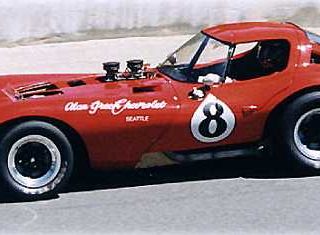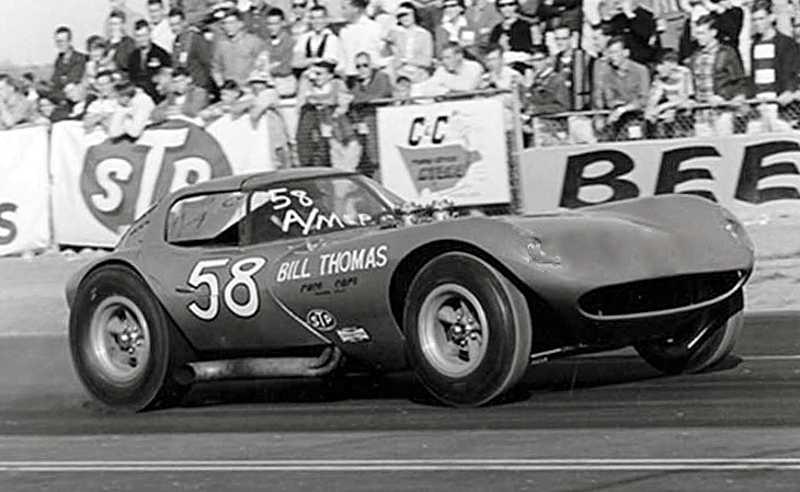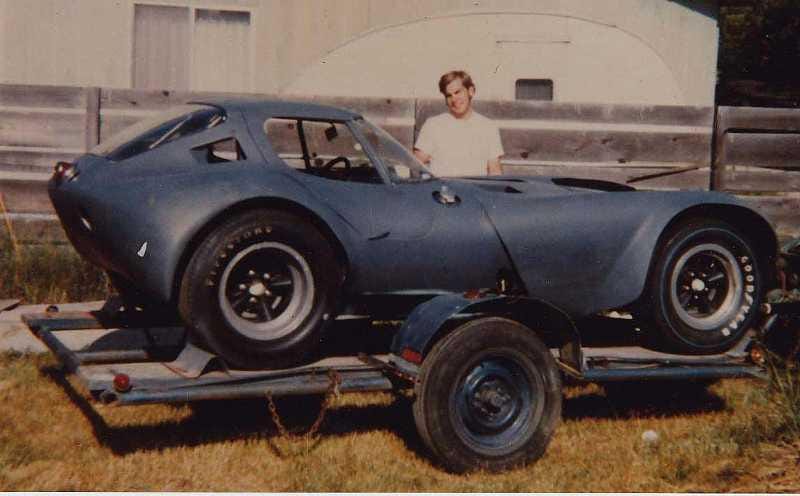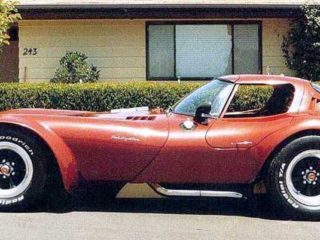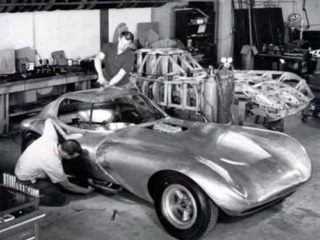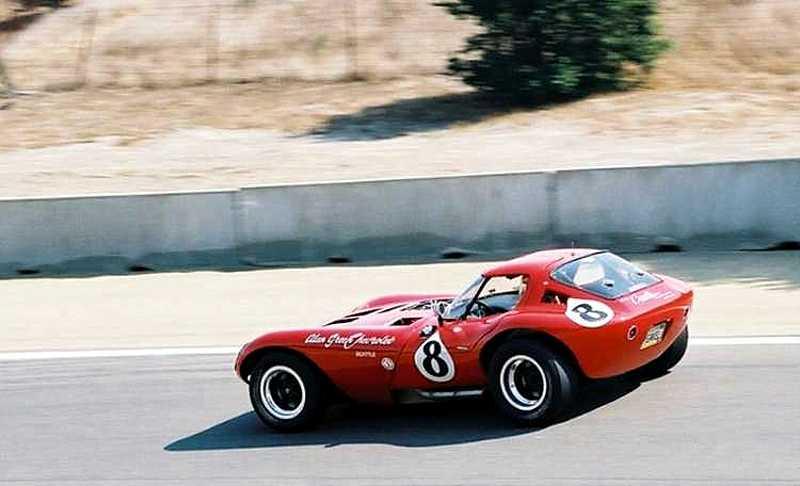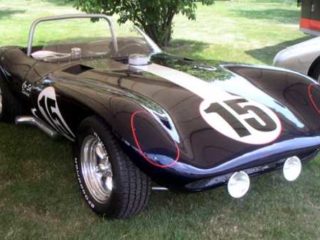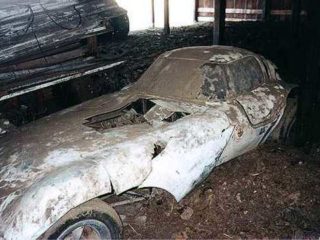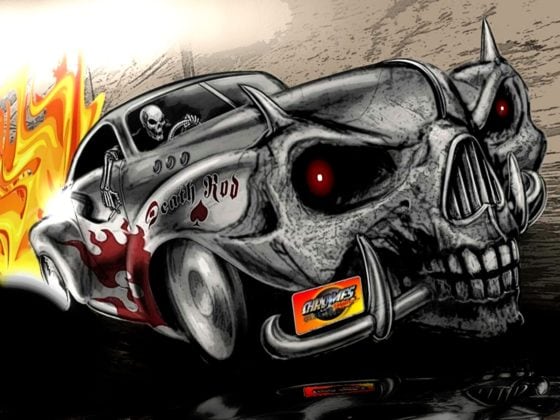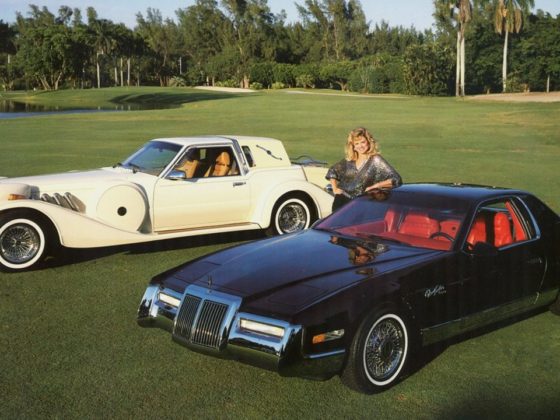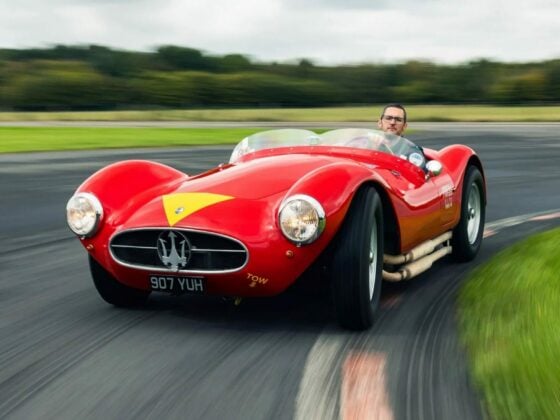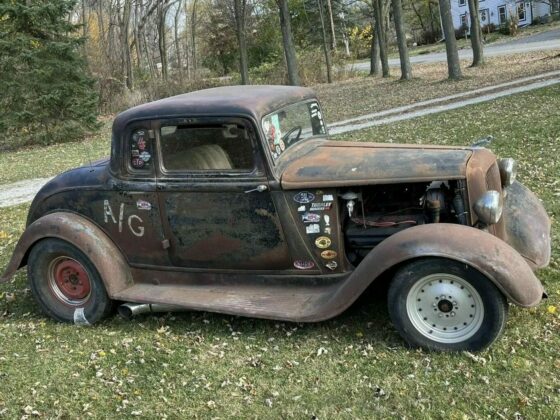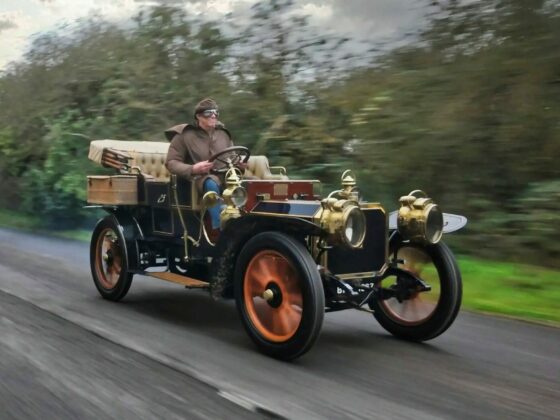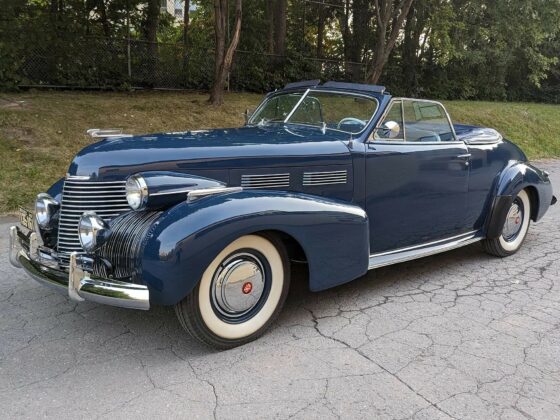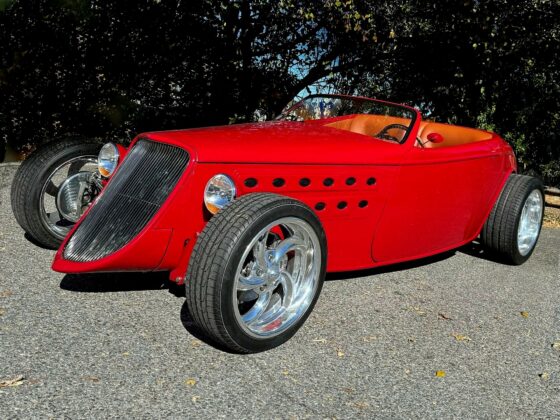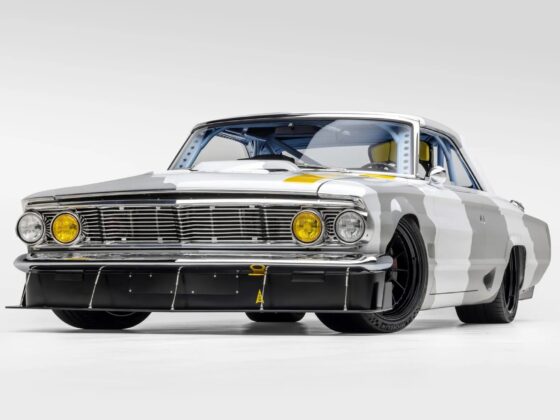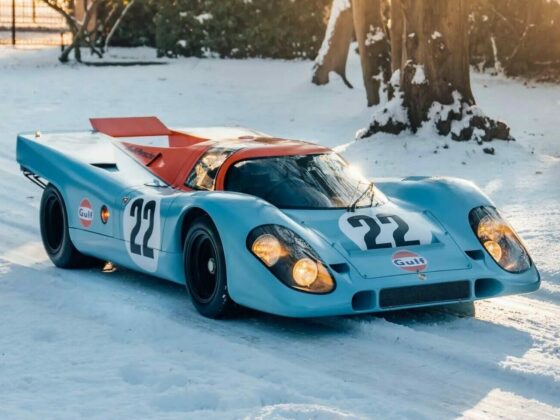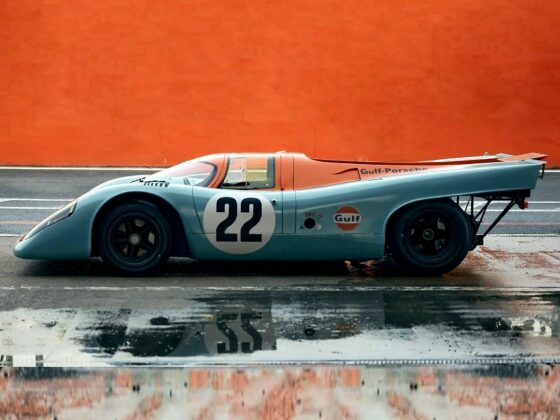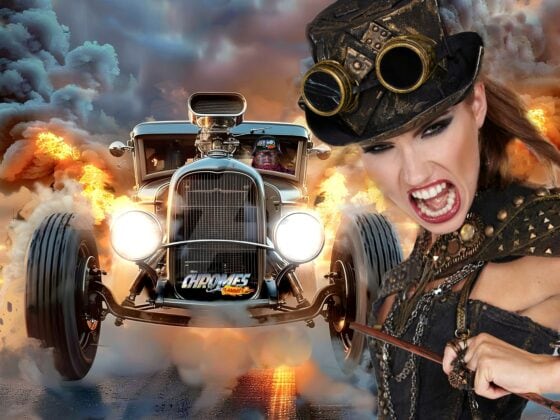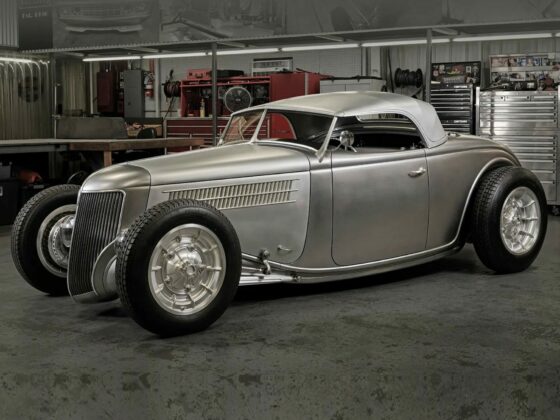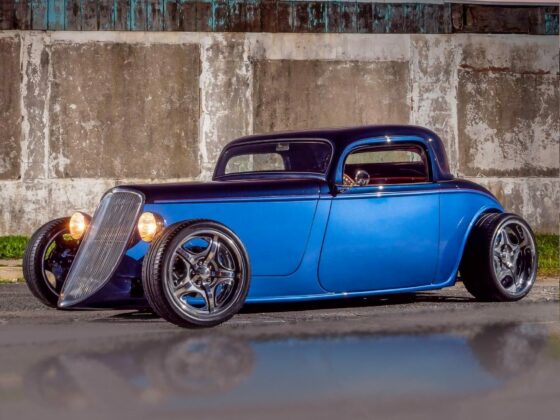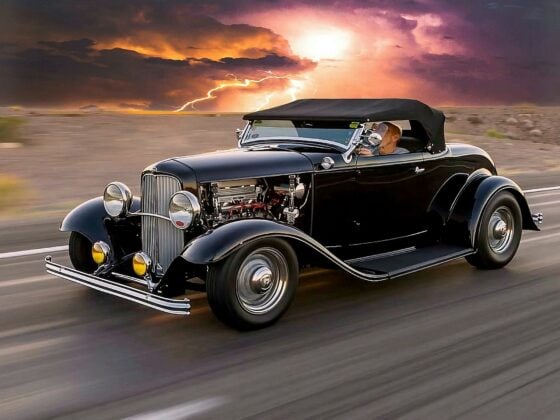Cheetah, the Bill Thomas dream !
Bill Thomas had been around Chevrolet products for a number of years, first managing a team of Corvettes, and then handling special-effects cars for Chevrolet advertising through Bill Stroppe.
There was one last holdout that appeared about that time, but it was based more on economy than all-out performance.
That sort of work got a little slow, however, and so Thomas and Edmunds went their own way.
While there he met Don Edmunds, and because Stroppe was more sod on Ford and Mercury performance activities, the tow of them left to handle the Chevrolet work on their own.
They decided to get back into high performance cars to show what they could do.
Their first project was a ‘62 Chevrolet, a stocker, which was built specifically for Dan Gurney to drive in the first Riverside stock car race.
It was rather unusual in those days to see a Chevrolet up among the Pontiacs and Fords, but Gurney qualified fifth without even practicing.
In the first 100 mile 100 mile heat.
In the second heat Goldsmith stayed togther to finish just ahead of Gurney, who therefore took first overall.
Gurney won easily, as Goldsmith, Ward and Foyt dropped out.
But then, after the race, the inspectors noticed that some stiffening panels and the wheels wells were modified or removed and Gurney was disqualified.
That was enough USAC for Thomas, who decided to stick with the sports cars in SCCA.
The Cheetah was never really intended to be a race car.
Like most other Chevy specials, it’s primary purpose was to make money.
But to make money, it had to be produced as economically as possible, which meant few specially machined or welded parts.
Thomas was in close with Chevrolet Engineering, so he was able to get all the new components almost as soon as the car itself was available, and Edmunds began building a frame around the engine, driveline, and suspension.
There wasn’t any.
Practically every piece in the drive train, from the radiator back to the rear hubs was right our of the Corvette. One notable exception, however, was the driveshaft.
To get the engine as far aback as possible, they simply coupled the transmission output shaft universal joint to the one on the frame-mounted differential.
At the front, the 1962 Chevrolet knuckle assemblies were located 90 inches from the rear hubs, and a frame was sketched up to connect everything together.
The front suspension was finished with conventional tubular A-frames, with a large number of optional mountings holes for experimentation.
At the rear the geometry was standard Stingray, but the heavy stamped trailing arms were replaced with fabricated tube arms, and the transverse leaf spring was replaced with Monroe coil/shock units.
This was before disc brakes were readily available, so the Cheetah used the heavy duty Chevrolet drums, with sintered linings.
Most of the rest of the components were hand made, but in conventional design to race cars of the day.
The first body was hand-formed in aluminum, to match a simple wooden buck built over the frame and a tubular sub-structure was formed to support it.
From that, molds were taken so that the production bodies could be rapidly reproduced in fiberglass for the street models.
While that was going on, though, two more bodies were built in aluminum for a trio of racing versions.
Jerry Titus tested the first car in the fall of 1963, and was highly impressed with its’ performance-per-dollar ratio.
The handling was never widely acclaimed, however, and it was obvious that Titus’ skill was making up for a lot.
With a weight of 1500 pounds, and the recent 327 fuel-injected engine, it certainly had tremendous acceleration, and the brakes were adequate for a car of twice the weight.
After all, when they were in the same neighborhood , the Cheetah had to race against Hall’s Chaparral.
A local Chevrolet dealer picked up the sponsorship, and Titus raced the car briefly, but never with any outstanding success.
Jerry Grant also drove one of the cars, until he wrapped it up at Daytona.
It was extensively tested, and did quite well on the skidpad, but it was concluded that the lack of torsional rigidity was responsible for the erratic handling.
Cheetah number two was never raced because it was sold to Chevrolet Engineering at about the same time that Duntov was building his first lightweight Stingrays.
Edmunds left the company to get into the more profitable USAC game, but production eventually reached a total of sixteen cars.
The price was from $7,500 to $12,000, depending on the equipment and state of competitiveness, but the average cart wept for about $9,500.
By reverting to the manufacture and marketing of components only primarily drag parts Thomas was able to keep operating for a number of years.
Many of those cars are still running around southern California, some on the street, some on the strip and at least one on road courses.
But finally, in 1969, the economy caught up to him., and he quit to go into the real estate business.
A well detailed Cheetah was a beautiful machine, although it had a number of critical drawbacks in either everyday transportation or control on a race track.
The Bill Thomas Cheetah was an economy street version of the old Scarab-Chaparral school, but it was also competitive in amateur road racing.
A few of the fiberglass bodied cars are still seen today.
It was Corvette powered, with a custom-designed chassis and suspension.
The Cheetah was meant to be Cobra-killer…
There has never been another car like it.
Unfortunately, the Cheetah never made production.
A fire in the shop stopped production somewhere around the 16th car.
We know for sure that 11 cars were completed.
Beyond that is speculation and wishful thinking.
At least 8 cars survive.
I have tried to contact Bill Thomas several times in the past and never received a response.
He confirmed what other people that knew Bill Thomas had told me.
I met his son in 1990 when I was having work done on my Cheetah.
His father did not wish to talk about anything that had to do with the “Cheetah”!
The following is gathered from conversations with two people that worked at Bill Thomas Race Cars during the period that the Cheetah was being built until the fire at the shop.
From 1963 thru 1966 I was racing a “B” production Corvette in the Cal Club region of the SCCA.
The information specific to the Dixon Cadillac sponsored Cheetah is from my friendship with both Jack Goodman (owner and sometime driver) and Rolf Pickard (the used car manager at Dixon Cadillac and usually the other driver).
My family was in the business of selling used Cadillacs and we had done business with Dixon Cadillac for some time.
It was natural that we would pit together at the races.
The Cheetah was conceived and created by Bill Thomas at his company Bill Thomas Race Cars.
Due mainly to Thomas’ connections at Chevrolet, the most recent Corvette technology was available to the pair for almost every component.
In order to get the engine (and weight) as far back as possible, it was decided to forego the traditional use of a driveshaft.
On this car, the universal joint on the frame-mounted differential is coupled directly to the transmission output shaft joint.
Don Edmunds, a Thomas employee, is generally credited with the original chassis work.
Once the engine, driveline and suspension were completed, Edmunds simply created a frame to cage them, and a cage is exactly what the tube frame resembles.
The body was created in much the same manner.
This first body had a tubular substructure for support.
A simple wooden buck was built over the frame and the first aluminum body was hand formed.
Then they took molds from the aluminum body, one more aluminum body was built before the first fiberglass body hit production. About this time Don Edmunds left to for his own company Autoreasearch, Inc. to build racing cars.
The Cheetah quickly developed a notorious reputation, although some drivers such as Jerry Titus were allegedly impressed with it’s performance.
The tremendous acceleration of the 377ci motor (in the fully optioned race car known as Stage 3) versus the total weight of 1700 pounds, combined with heavy duty Chevrolet drum brakes, which were more than adequate for a car of twice the weight, kept straightaway power from being an issue for this car.
In fact, it was the massive horsepower to weight ratio that, despite Titus’ skill with the car, promoted its notorious reputation.
Sadly, the factory never produced the required 100 cars to qualify as a production automobile due to many circumstances, from the fire in the factory, to Chevy’s lack of support, and of course the car’s reputation….
Cheetah number one was never raced as it was sold to Chevrolet Engineering.
Although it was extensively tested, and did quite well on the skid pad, it was concluded that the lack of torsional rigidity was responsible for the erratic handling.
The car was later returned to Bill Thomas Race Cars.
Cheetah Number Two had an extensive race career before ending up on the street.
In July 1963, Bill Thomas tested several people to drive the development factory car, including Bob Bondurant, Billy Cantrell, and Jerry Titus.
Jerry Titus was selected.
The car was scheduled to make its competition debut in the 1963 Los Angeles Times Grand Prix at Riverside International Raceway.
However, in testing at Riverside two weeks before the event, Billy Cantrell crashed heavily into turn nine, effectively preventing the car from running the ’63 event.
The debut finally came in January 1964 at a Cal-Club event at Riverside, with Jerry Titus driving.
As Titus completed lap one, in 1st place, the lower radiator hose came loose, dumping water under the rear wheels.
The car went straight off turn one, climbed the Armco guardrail, and went over the top.
Titus survived, but the car was heavily damaged.
Near the end of the year, Friendly Chevrolet in Rialto, CA became the owner/sponsor until the car was sold to Jerry Entin in 1965.
However, it was repaired at the Thomas facility and continued to compete in West Coast tracks such as, Pomona, Riverside, Cotati, Seattle, Phoenix, and Santa Barbara through out the remainder of 1964 with Jerry Titus as the driver.
Entin’s previous race car had been Max Balchowsky’s Ol’ Yaller Mk.II.
Entin’s inaugural event with the Cheetah was a club event.
It was the first race to be held at the old Stardust Raceway in Las Vegas.
Entin won !
In preparation for the Times Grand Prix in 1965, Entin heard a clunking noise and took it to Bill Thomas’ shop.
He then campaigned the car at Santa Barbara, Riverside and throughout Southern California at Cal-Club events.
Late in the race the right rear suspension pulled out going into turn 6.
Thomas was unable to find anything wrong.
The car rolled slowly and the body was lightly damaged.
Entin had the car repaired.
He then rented it out for the Elvis Presley movie Spin Out.
Entin later sold the Cheetah to Denny Doherty of the Mama’s and Papa’s, who promptly converted it into a wild street car.
The third car (the first fiberglass body) was purchased for the 1964 Daytona race by Ralph Salyer.
Ralph Salyer and Gene Crowe, his mechanic, campaigned this car which became known as the Cro-Sal Special and was modified to be the one and only roadster.
Bud Clusserath, out of Indiana, purchased the fourth Cheetah to run in the 1964 Daytona 12-hour.
Clusserath campaigned this car, but never as successfully as Ralph Salyer.
The fifth car was raced by Alan Green Chevrolet/Bardahl out of Seattle.
This car was driven by Jerry Grant at Daytona in February 1964 where, during qualifying, he got off course, hit a drainage ditch and severely damaged the car.
Thus, this Cheetah did not compete at Daytona.
The sixth car was purchased by Alan Green Chevrole to race on the West Coast and the USRRC.
The seventh car was also purchased by Alan Green Chevrolet to be sold as a street car.
Alan Green’s wife occasionally took it to the drag races.
The eighth car was not originally raced until many years later when Skip Gunnell converted it and ran vintage events.
Jack Goodman, of Dixon Cadillac, purchased the ninth Cheetah with the original intent to drive it on the street, and occasionally run a Cal-Club event in Southern California.
Many times it was incorrectly reported that this car had a Cadillac engine.
In reality, it was delivered with a stock 1964 Corvette Fuel Injected 375hp engine.
When Jack Goodman decided to go racing, the “Thomas Dual Air meter” fuel injection unit was installed along with the 1964 Pontiac NASCAR radiator, angled back 45 degrees, and hood vents.
In August 1965, one of the first Chevrolet 396 rat motors and a M22 ‘Rock Crusher‘ was installed in this car.
It competed at the Los Angeles Times Riverside Gran Prix in this configuration.
James Phillips purchased the “Dixon Cadillac” Cheetah and it went to his shop in Las Vegas, NV.
The 396 motor was replaced with a L-88 purchased from the Bill Thomas shop in early 1968.
David Pinjuv wrenched on the Cheetah for Phillips during 1968.
David states that they won at Tucson, did well at Denver, got rained out in Oregon, ran Willow Springs, broke a spindle at Odessa and towed to every race within reach.
They raced all over the Southern Pacific Region SCCA in the A Sports Racing class.
He especially remembers Tucson since he rode along for the victory lap.
“The intake gaskets had failed and there must have been 6 quarts of oil on the floor board, every fastener on the passenger door had been lost and the door came off in my hand when I climbed in”.
Tucson was a rough track.
The rebuild after Tucson included the adoption of Corvette disk brakes on the front.
The steering rack was shot and the third member had rotated 3 inches to the right.
Jim won the A/SR championship for the Southern Pacific Region of the SCCA in 1968.
After the season the Cheetah was sold so Phillips could purchase a McLaren Mk3.
There are conflicting reports where the Cheetah is now.
Cheetah number ten was drag raced extensively by Don Greib, sometimes referred to as the factory drag race car.
It was in the Bill Thomas shop the night of the fire and was a total loss.
After Chevrolet Engineering completed evaluating the first factory car, it was refurbished and made its brief road racing history, as the Hurst Performance Special.
The factory also drag raced this car and used it for publicity purposes.
Chronological Build History
This is the Cheetah build order, as accurately as we have been able to locate
01: Red Aluminum body. Bought by Chevrolet
02: Red Aluminum body. Bought by Friendly Chevrolet, wrecked and rebodied in fiberglass and painted blue
03: Blue Fiberglass body. Sold to Ralph Salyer – Became Cro-Sal Special
04: Red fiberglass. Sold to Bud Clusserath
05: Bardahl – Yellow, Jerry Grant destroyed at Daytona 64
06: Bardahl /Alan Green Chevrolet – Red
07: Alan Green Chevrolet – Green Street Car
08: Tom Fredckin(Mike & Shari Musia) – Blue Street Car , Raider wheels & Allstate tires Street cars to have Hurst shifter & Allstate whitewall tires, batteries & shocks with adaptors for coilovers Raider wheels were sold by Allstate
09: Jack Goodman – Silver Street Car became Clarance Dixon Cadillac race car
10: Don Greib – Red Drag Race Car
12: Bare frame never completed
11: Super Cheetah (65 Cheetah) never completed, lost in fire
13: Bare frame never completed
14: Bare frame never completed
15: Rebodied #1 car white in fiberglass Hurst/Allstate performance car wrecked at Riverside 1964
16: Rebodied #2 car blue fiberglass Jerry Entin
